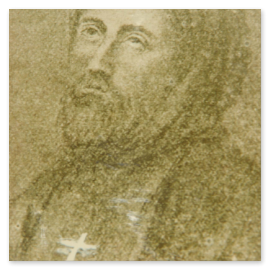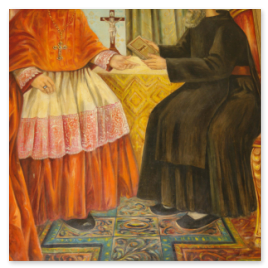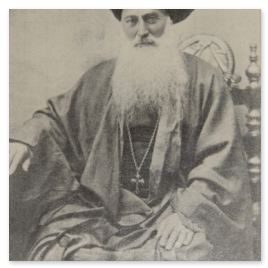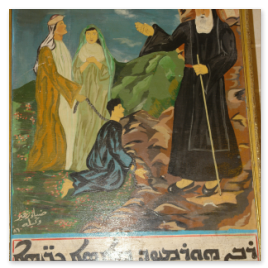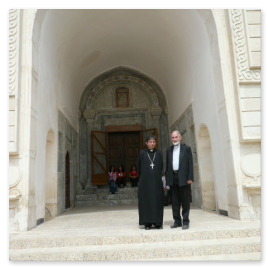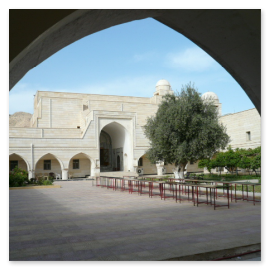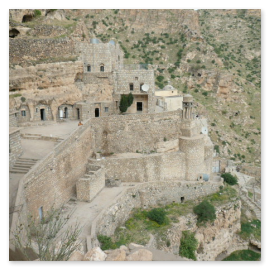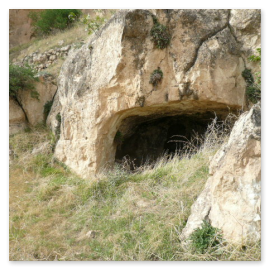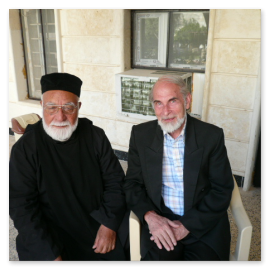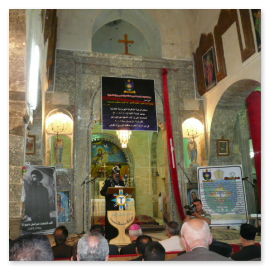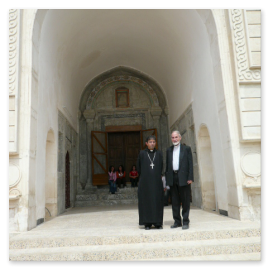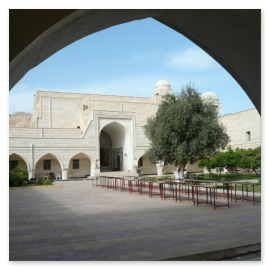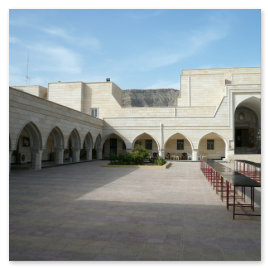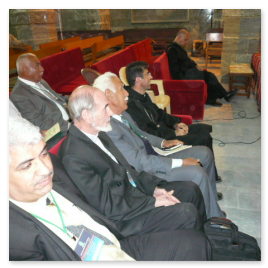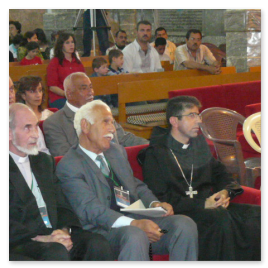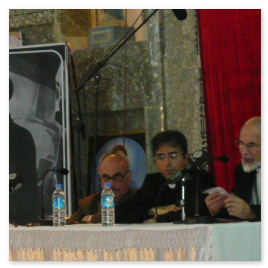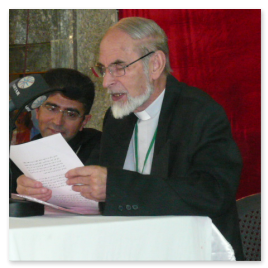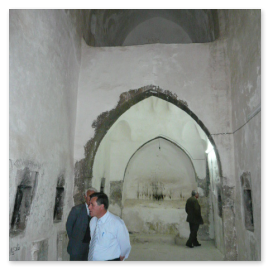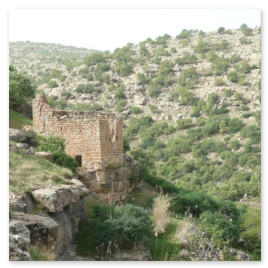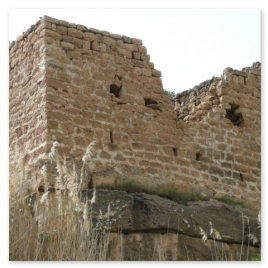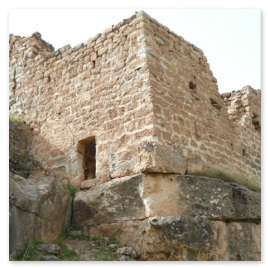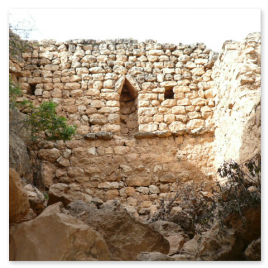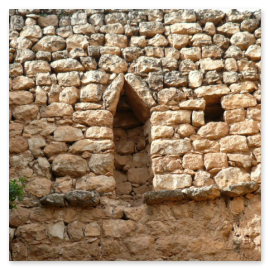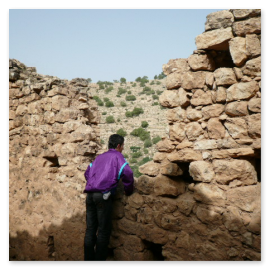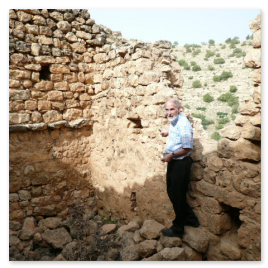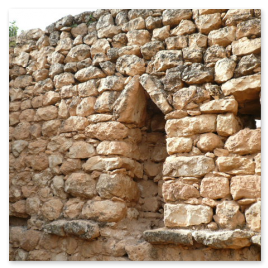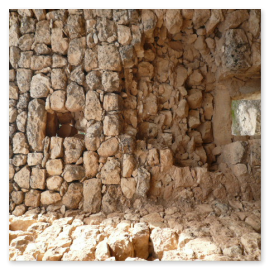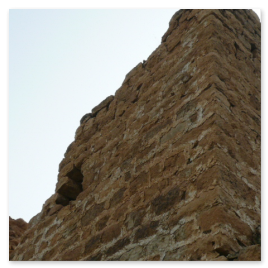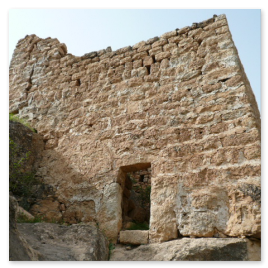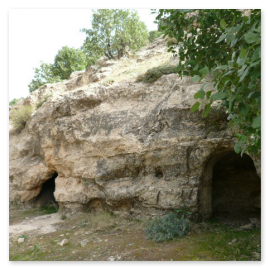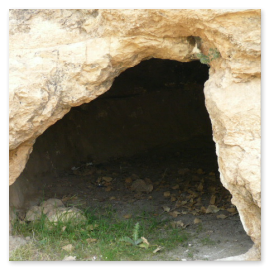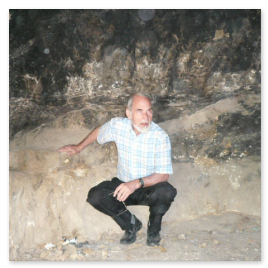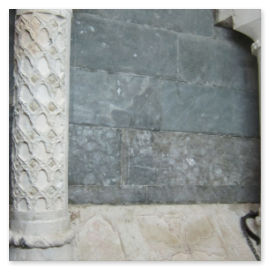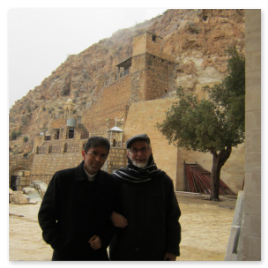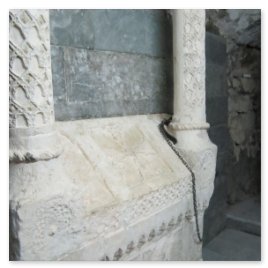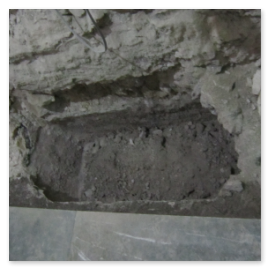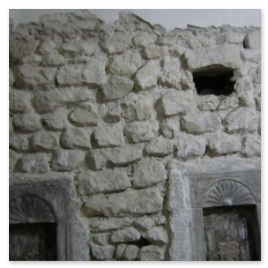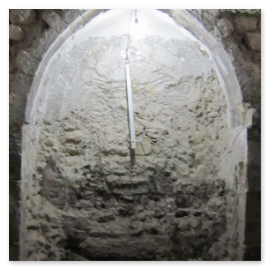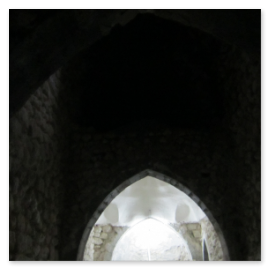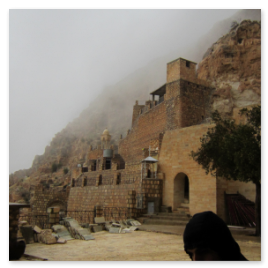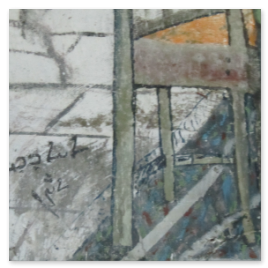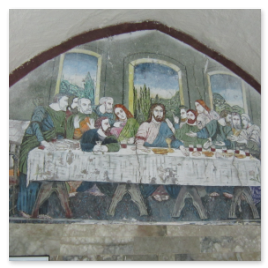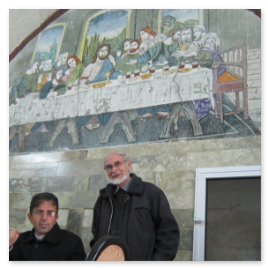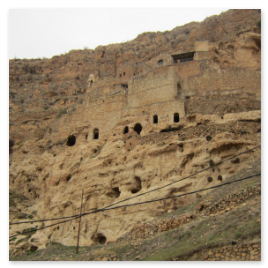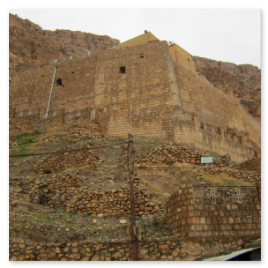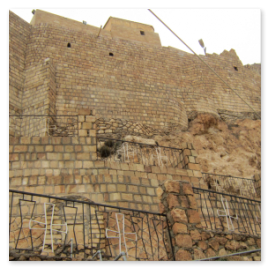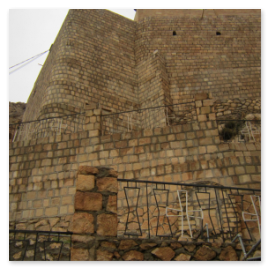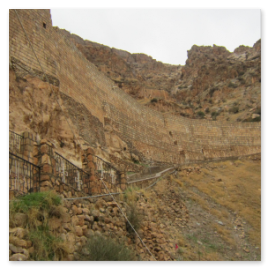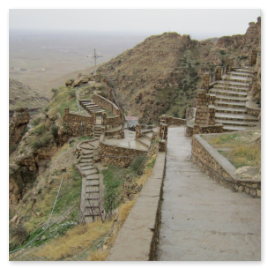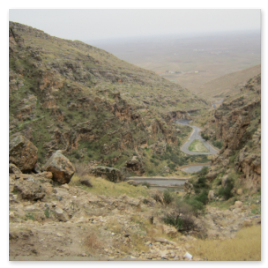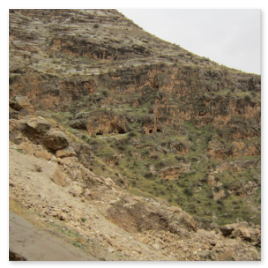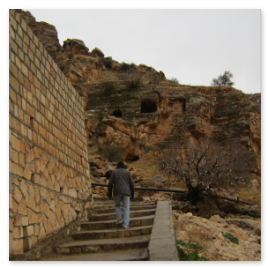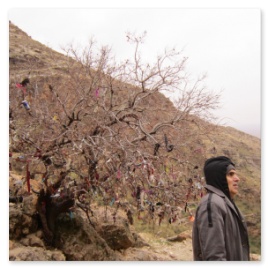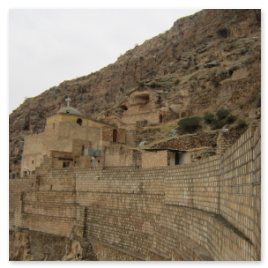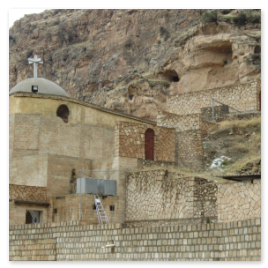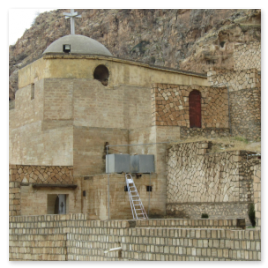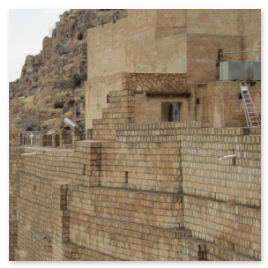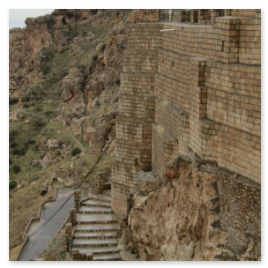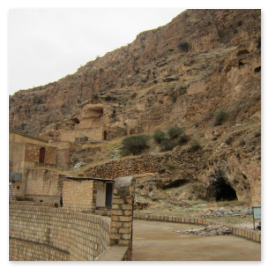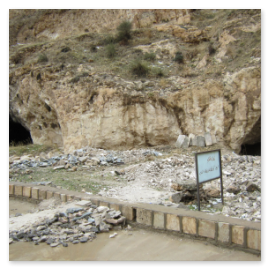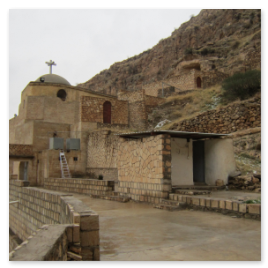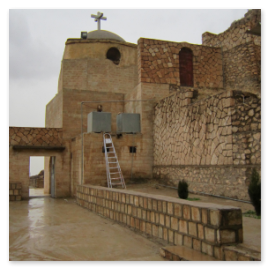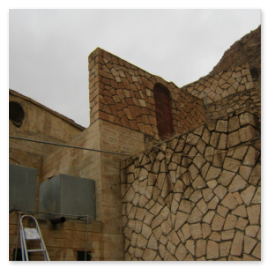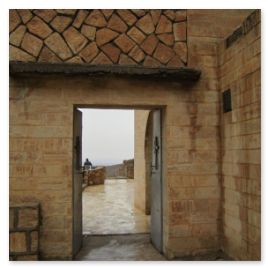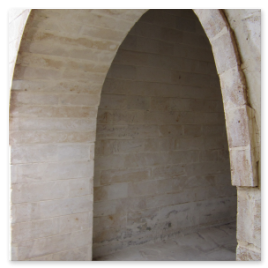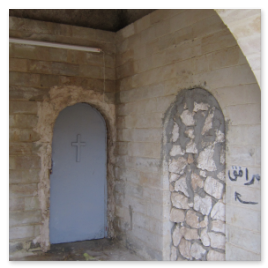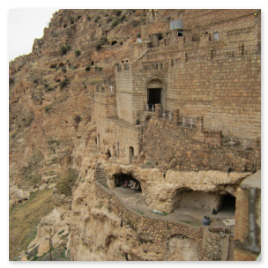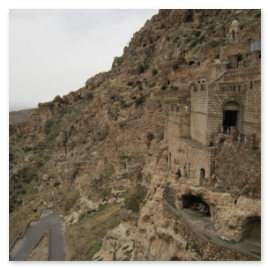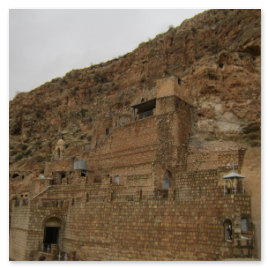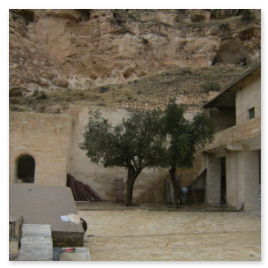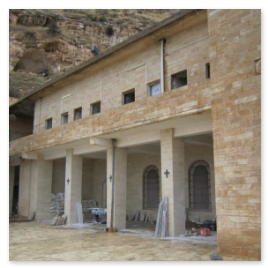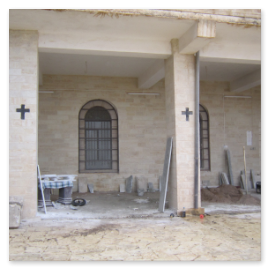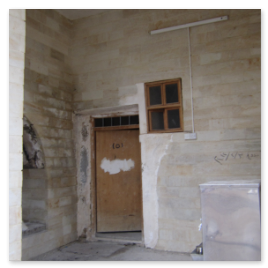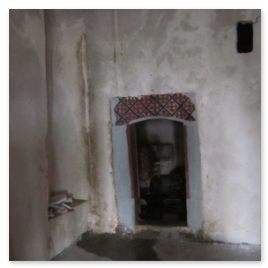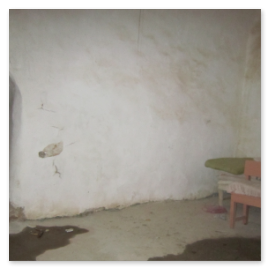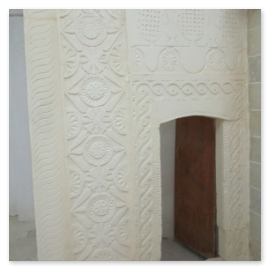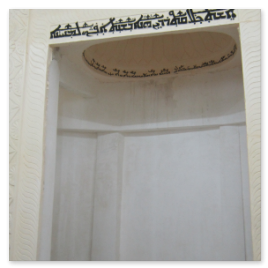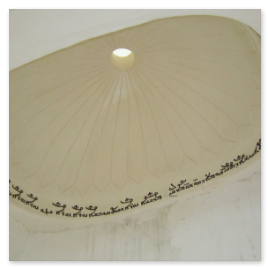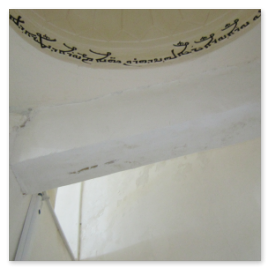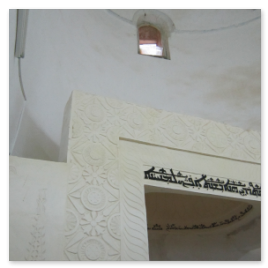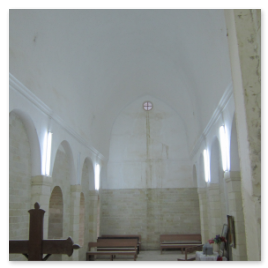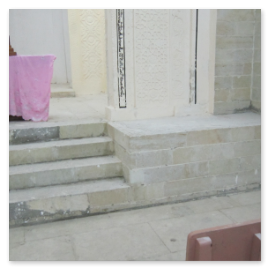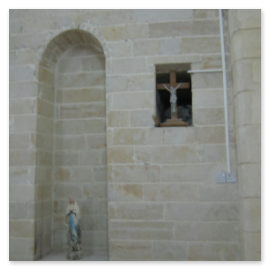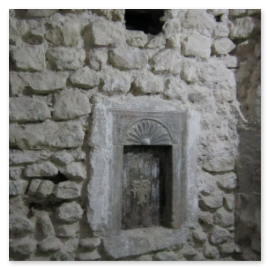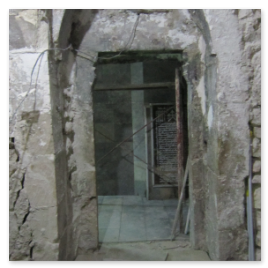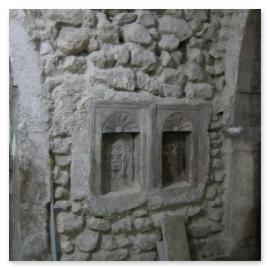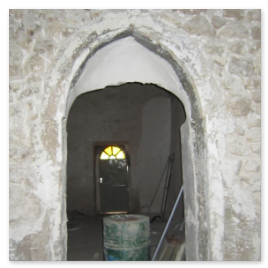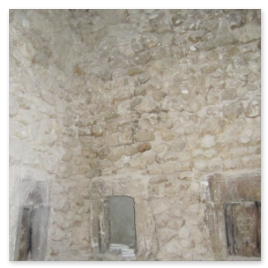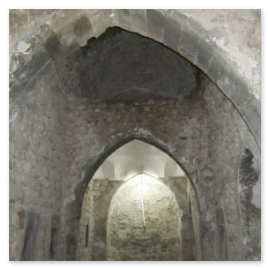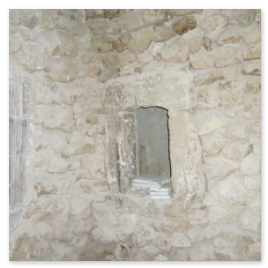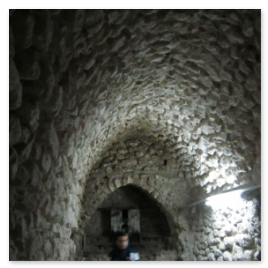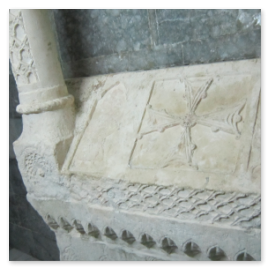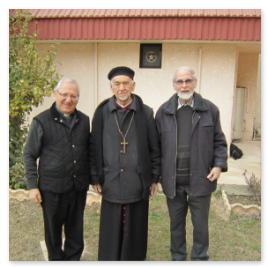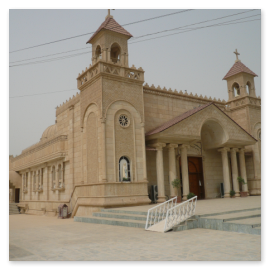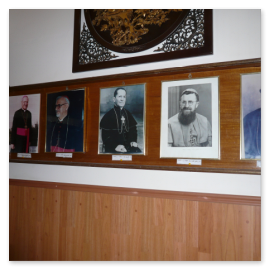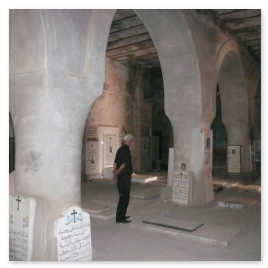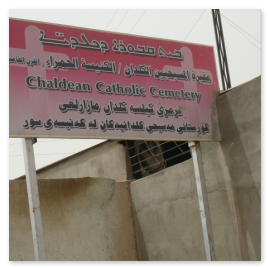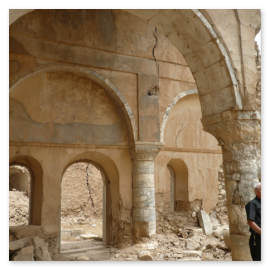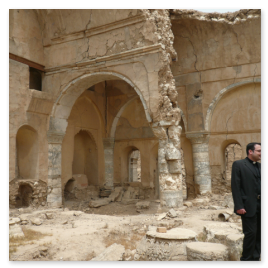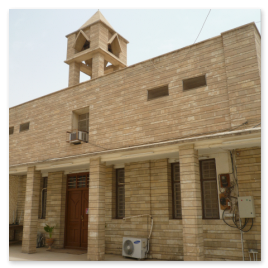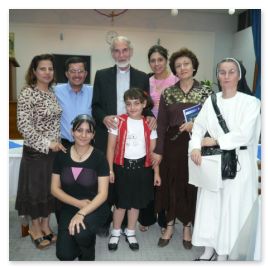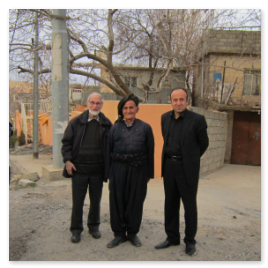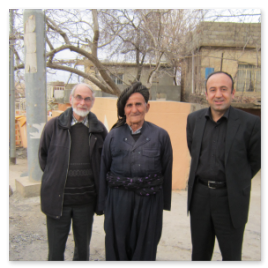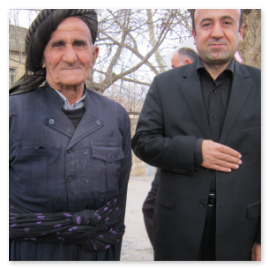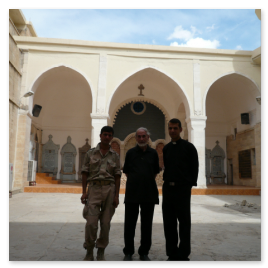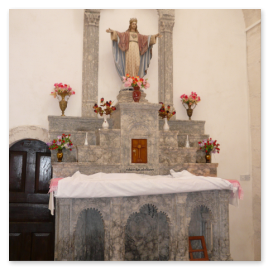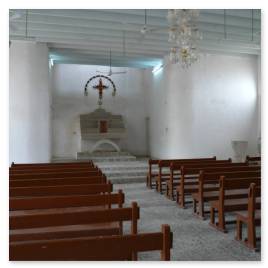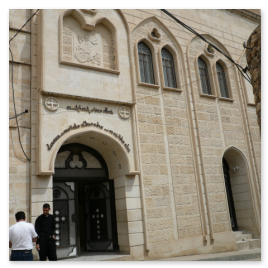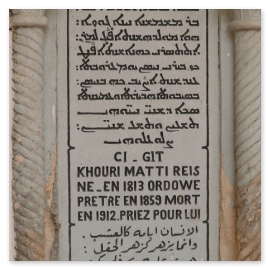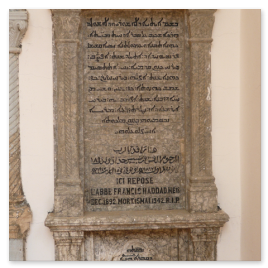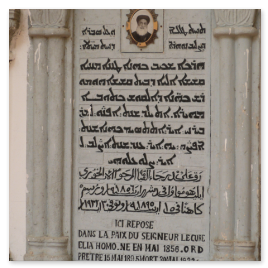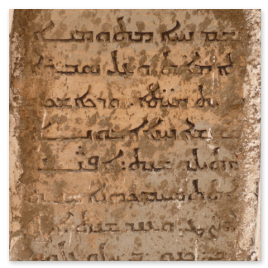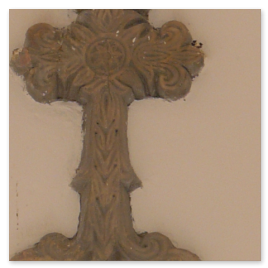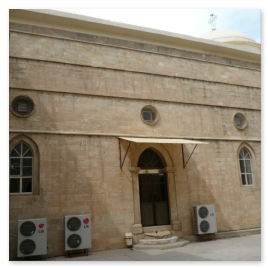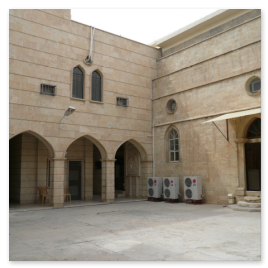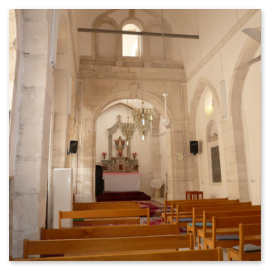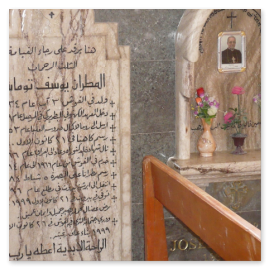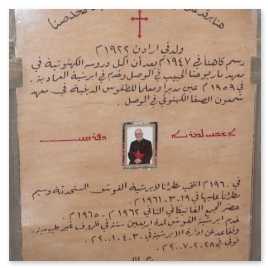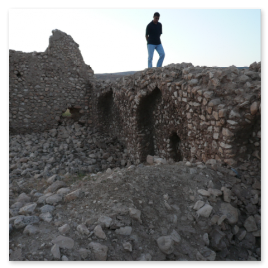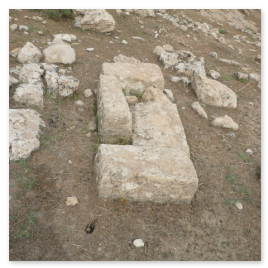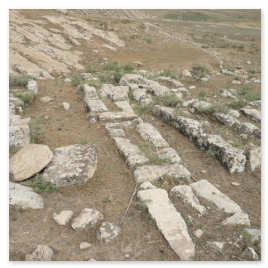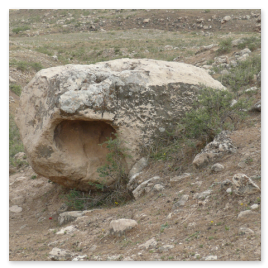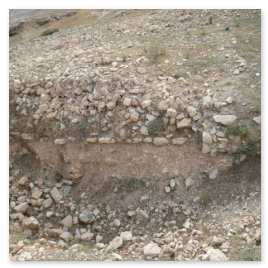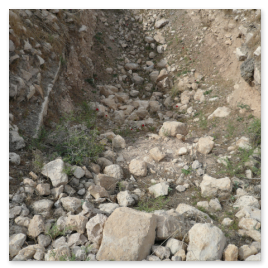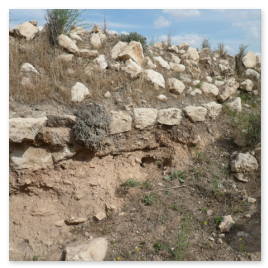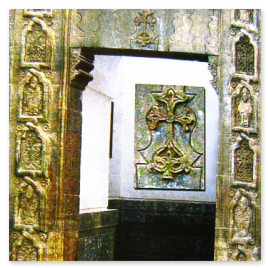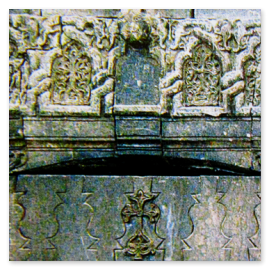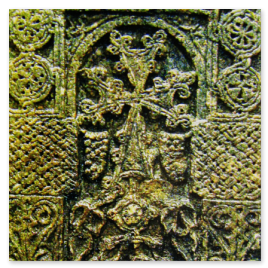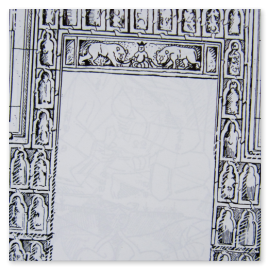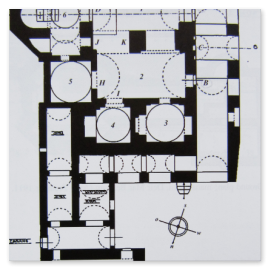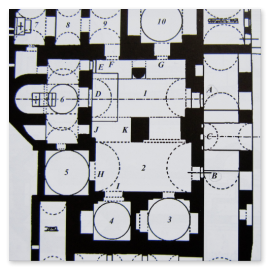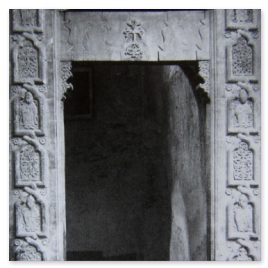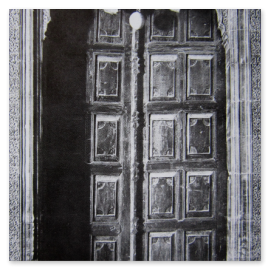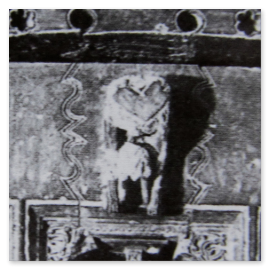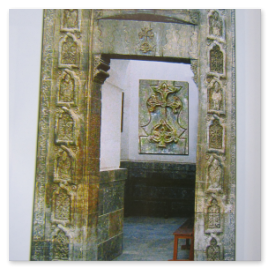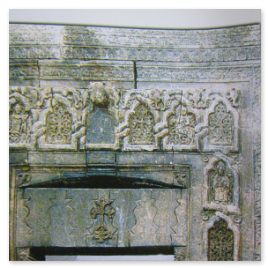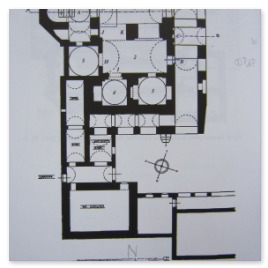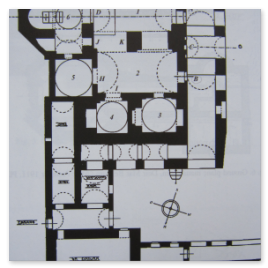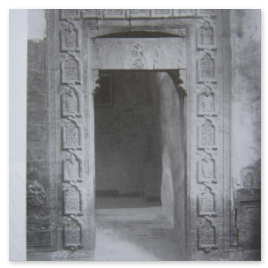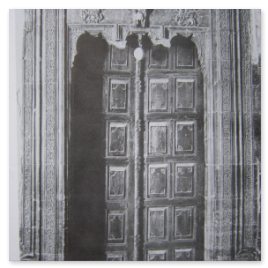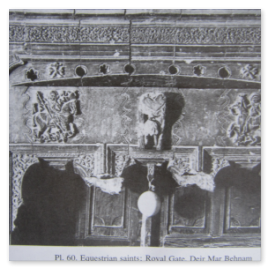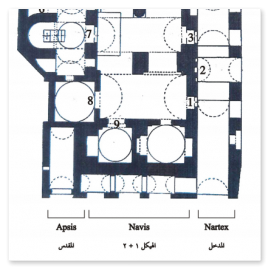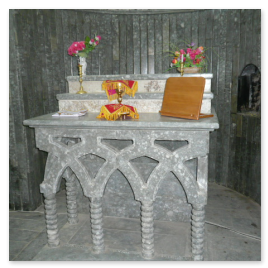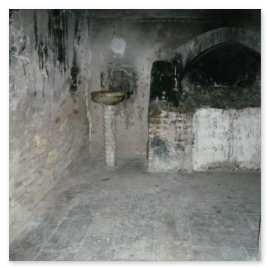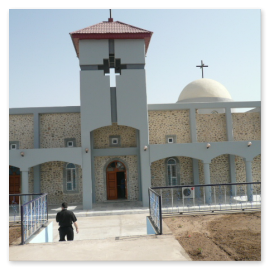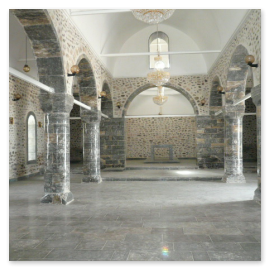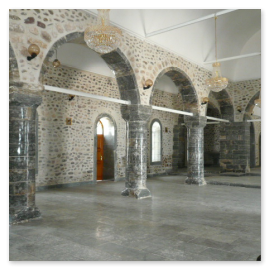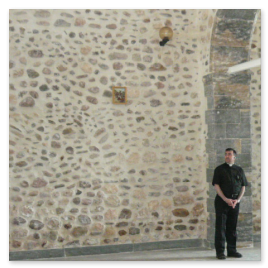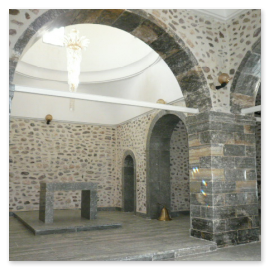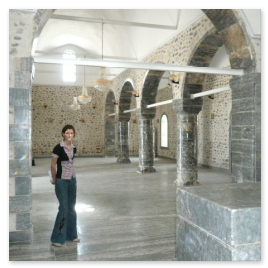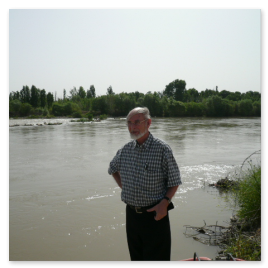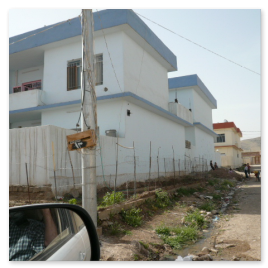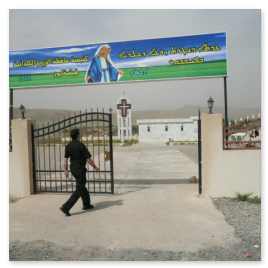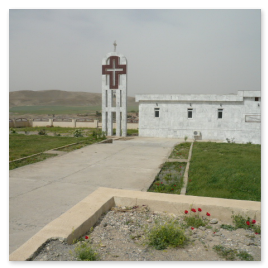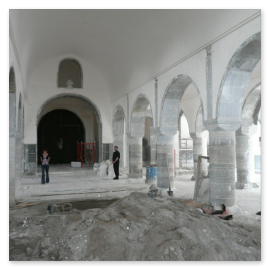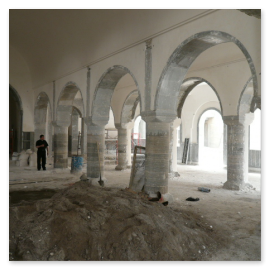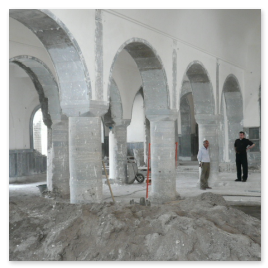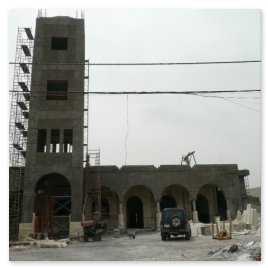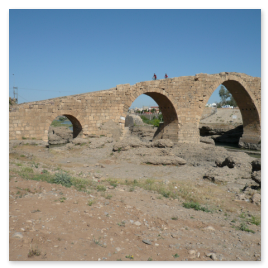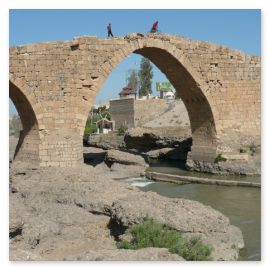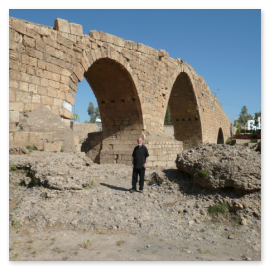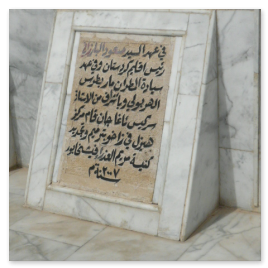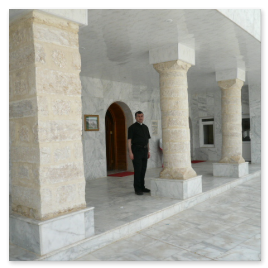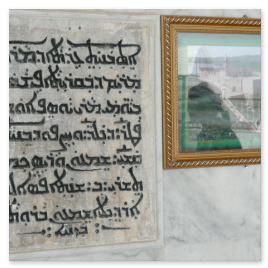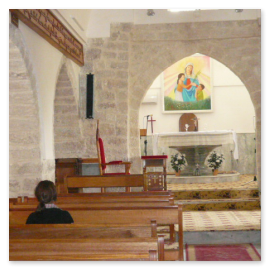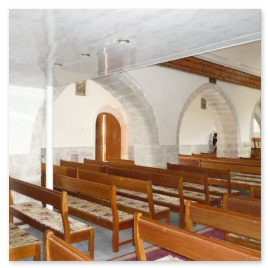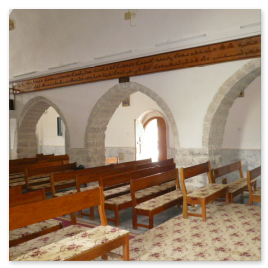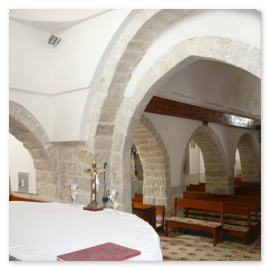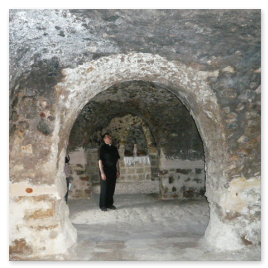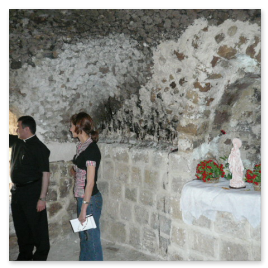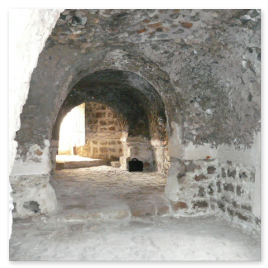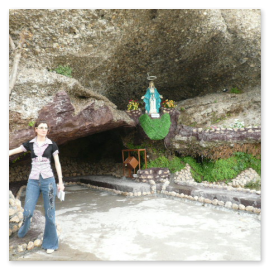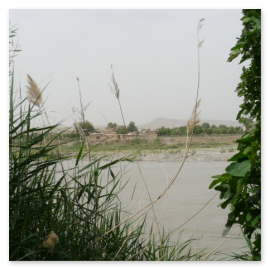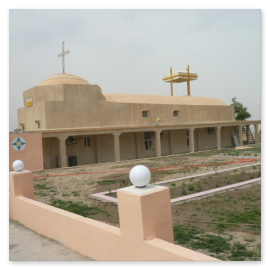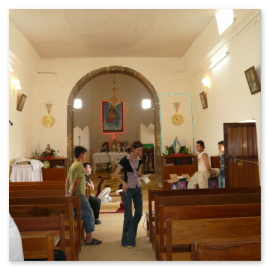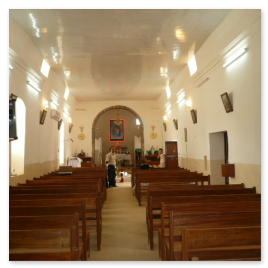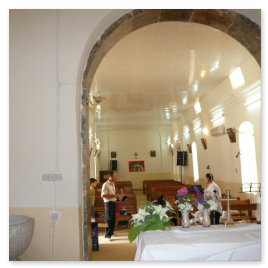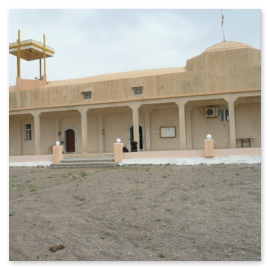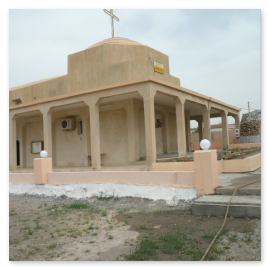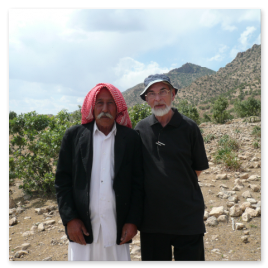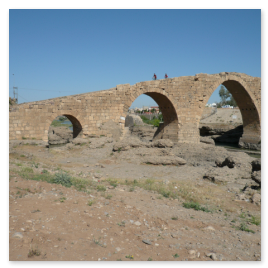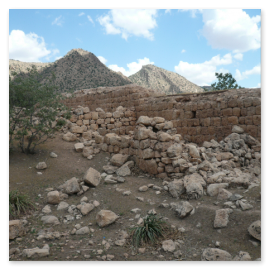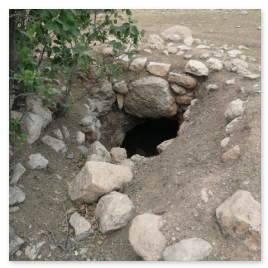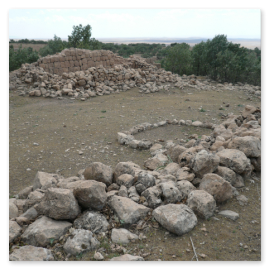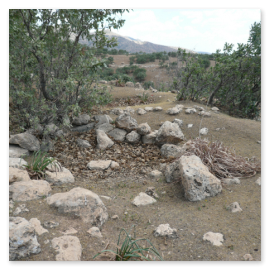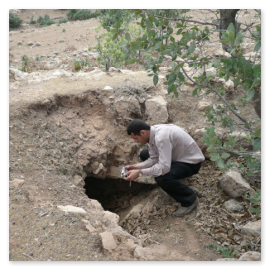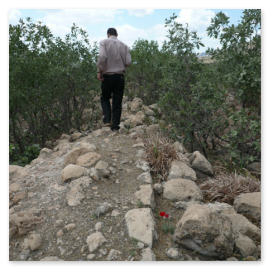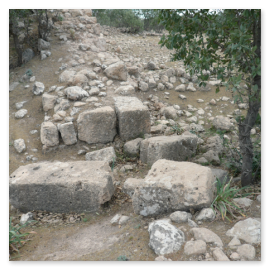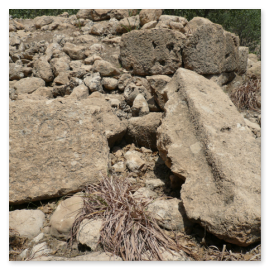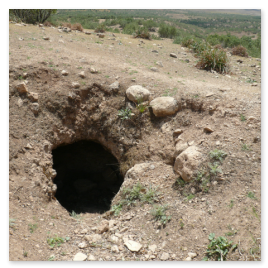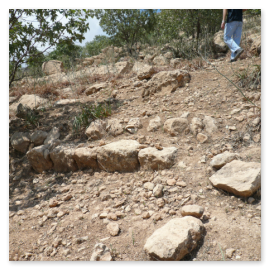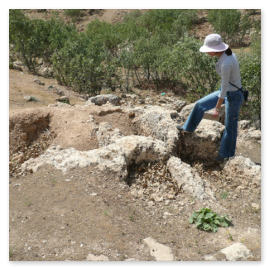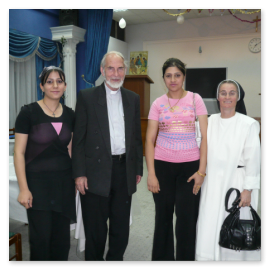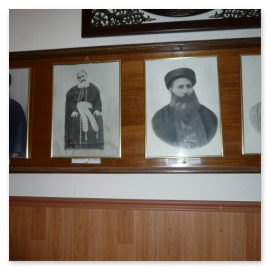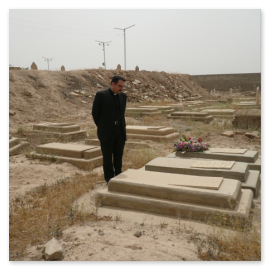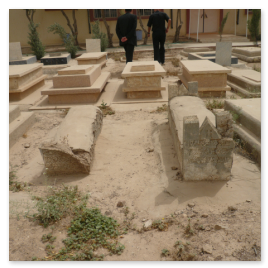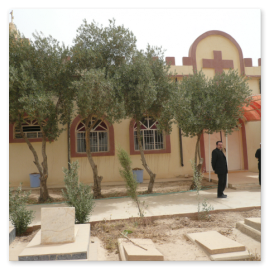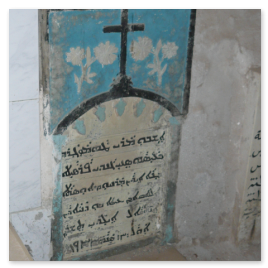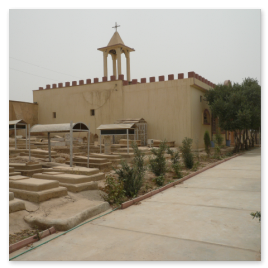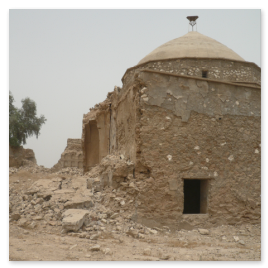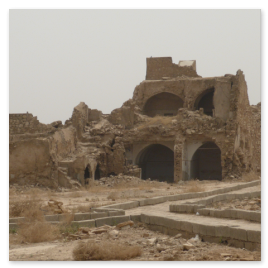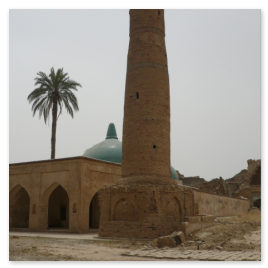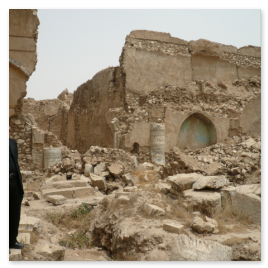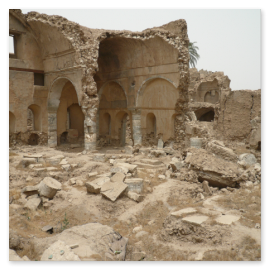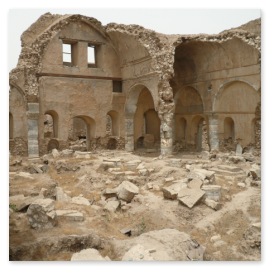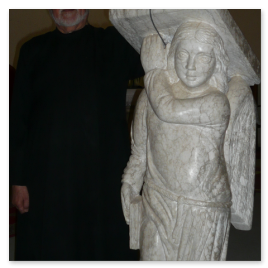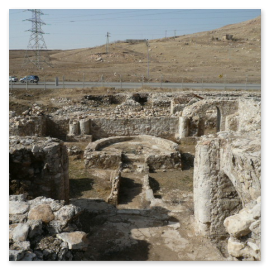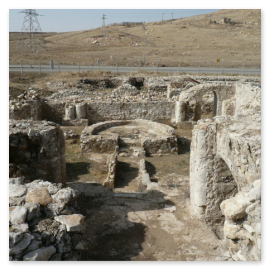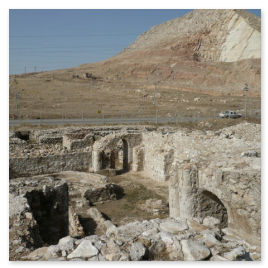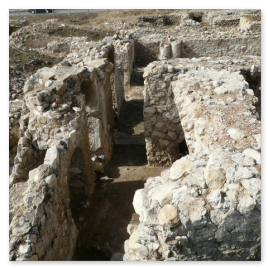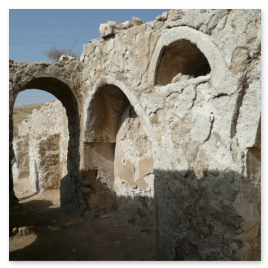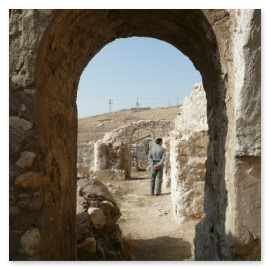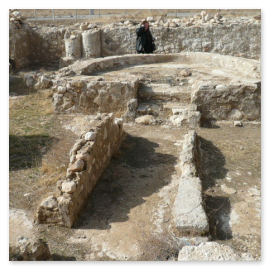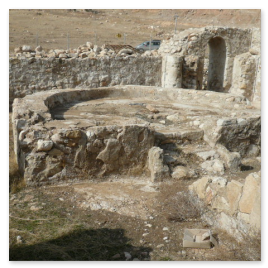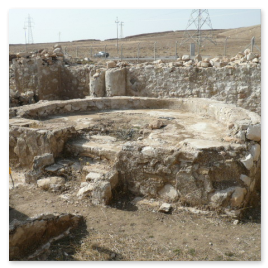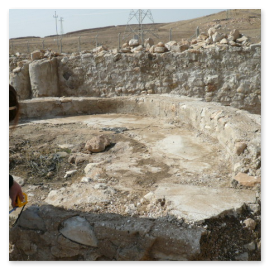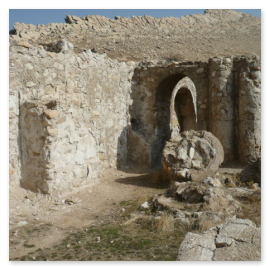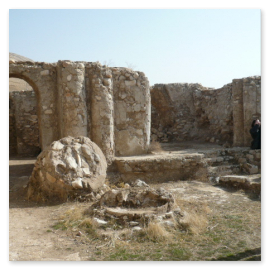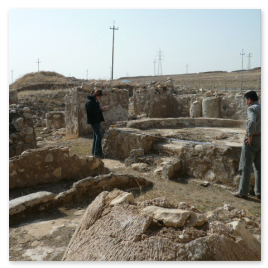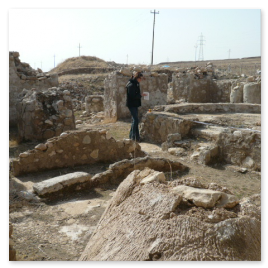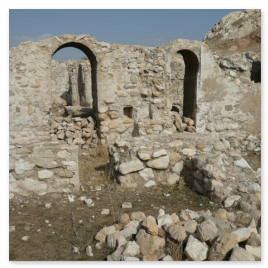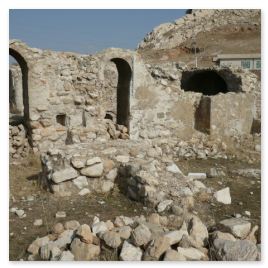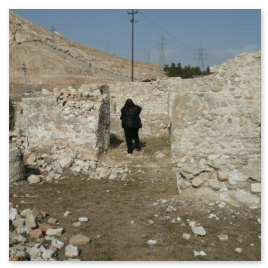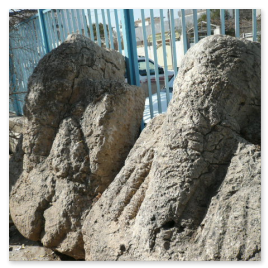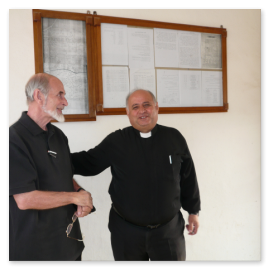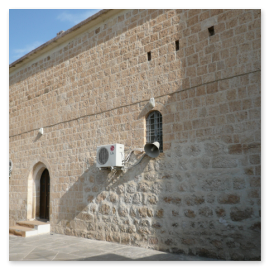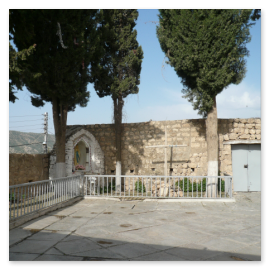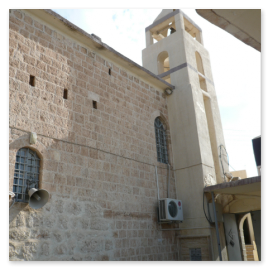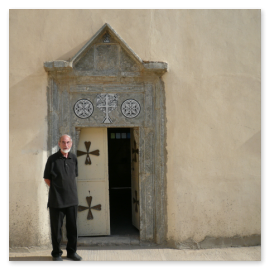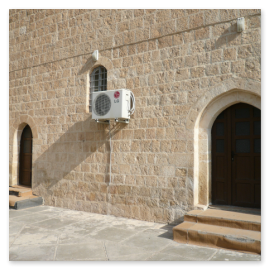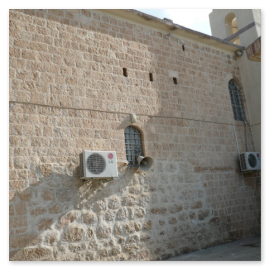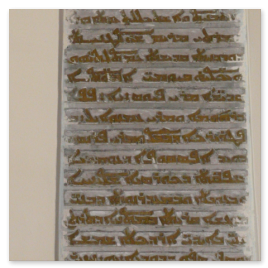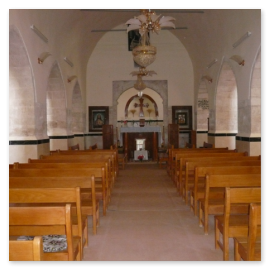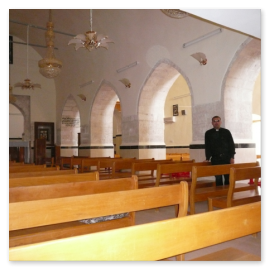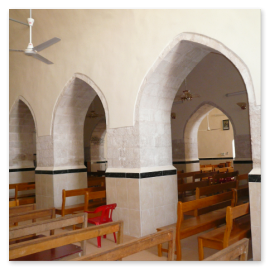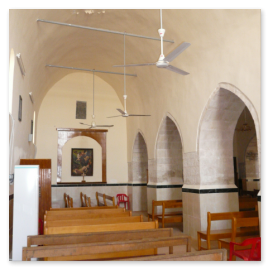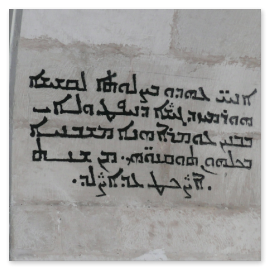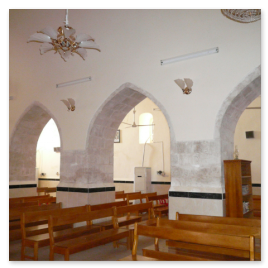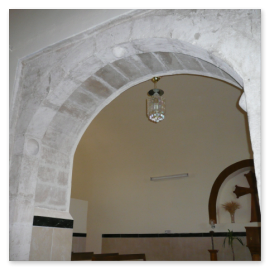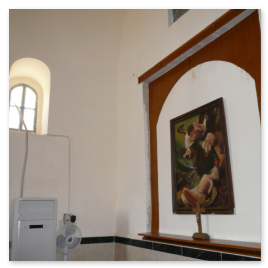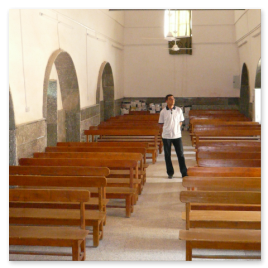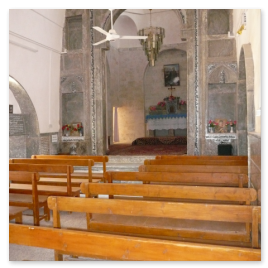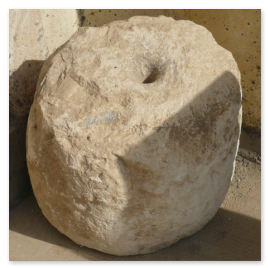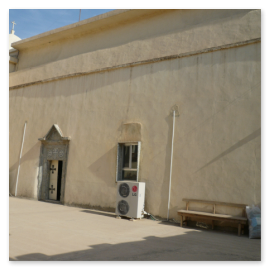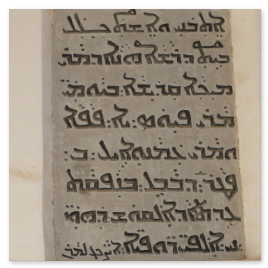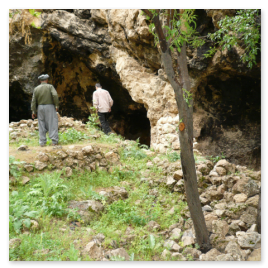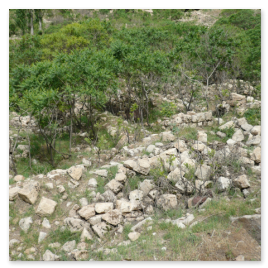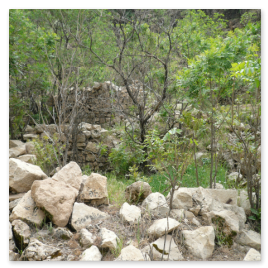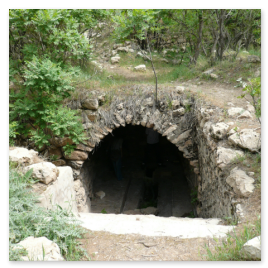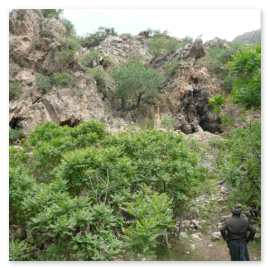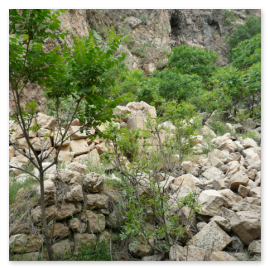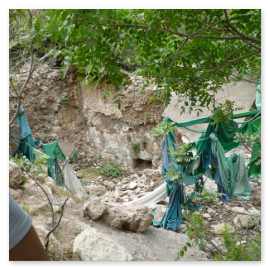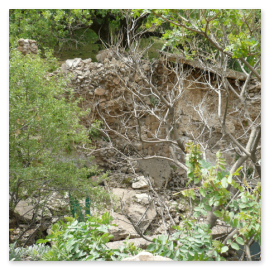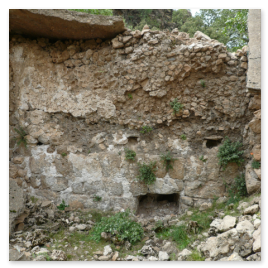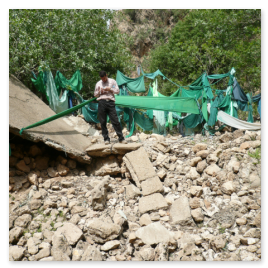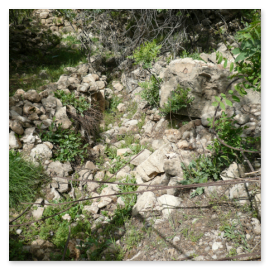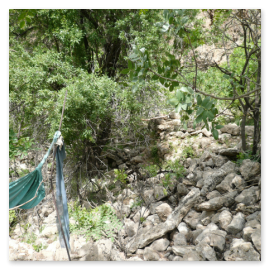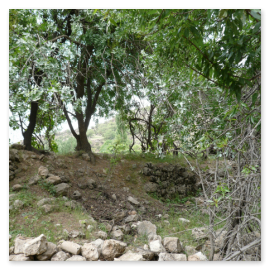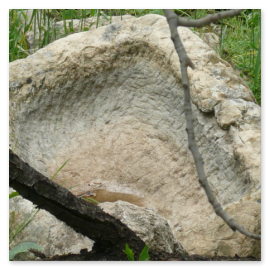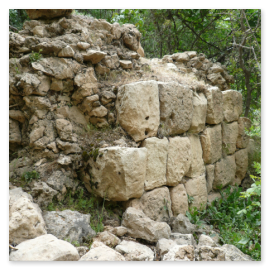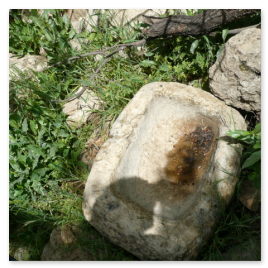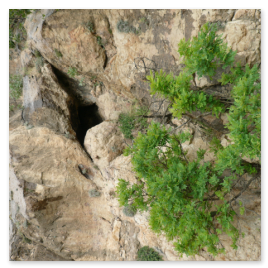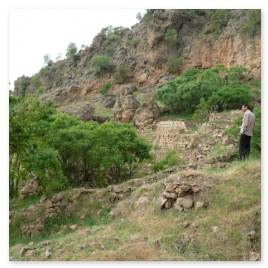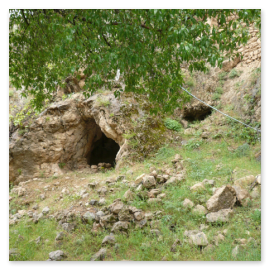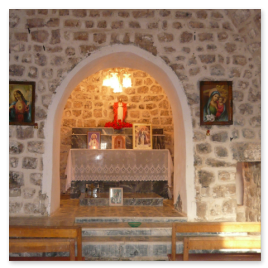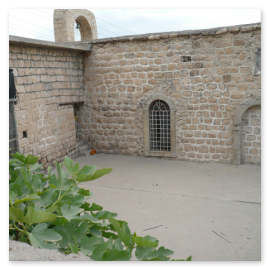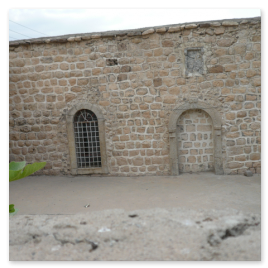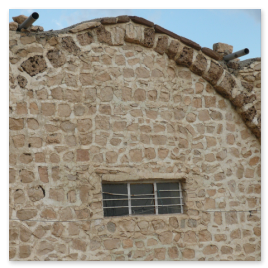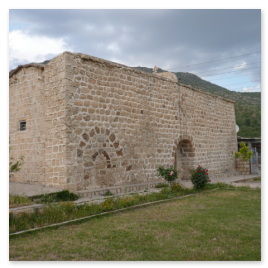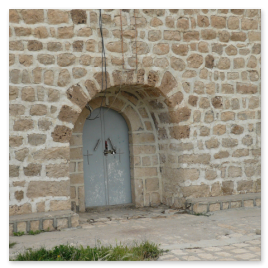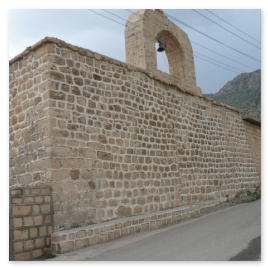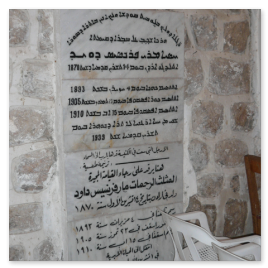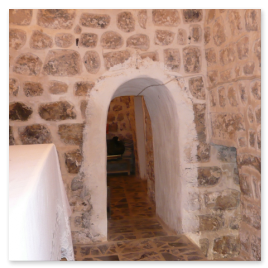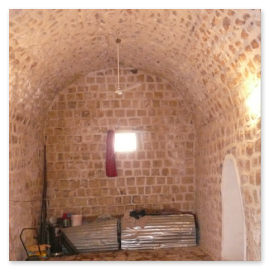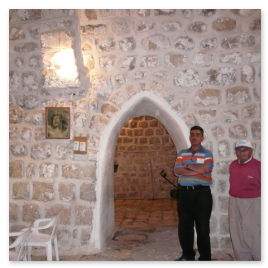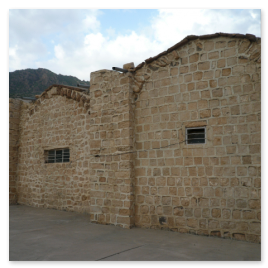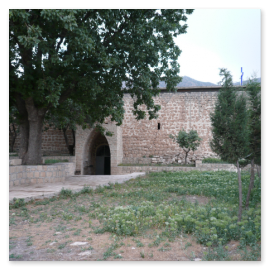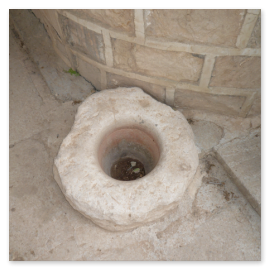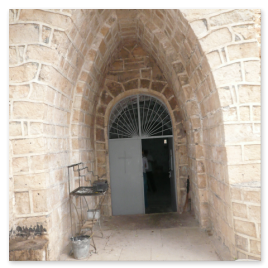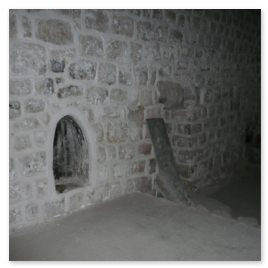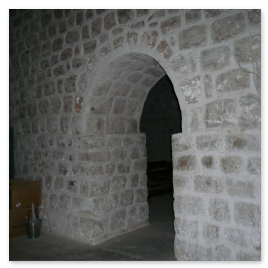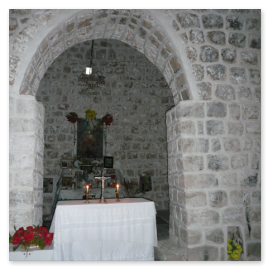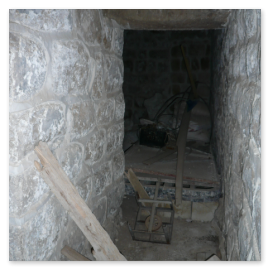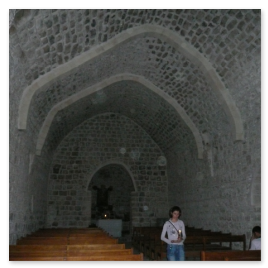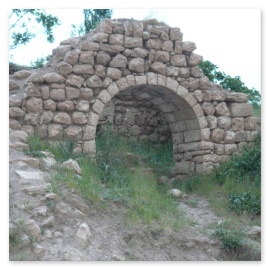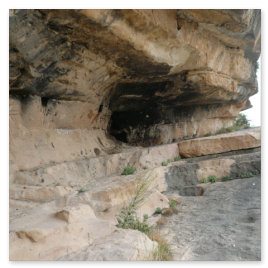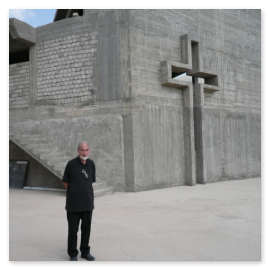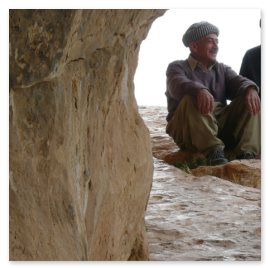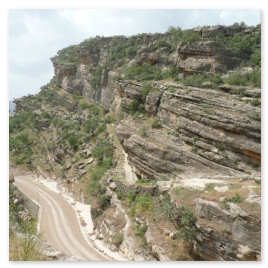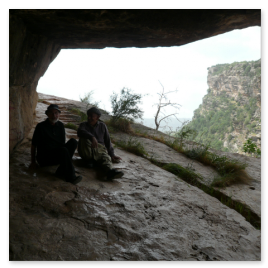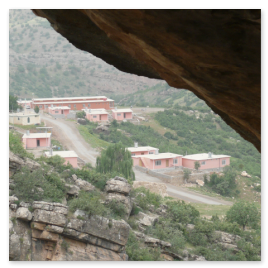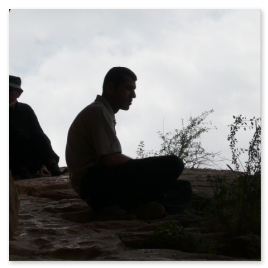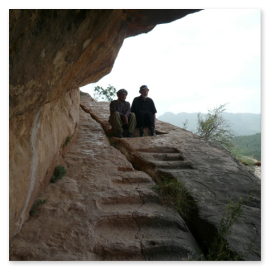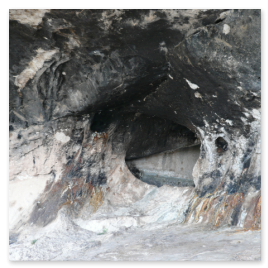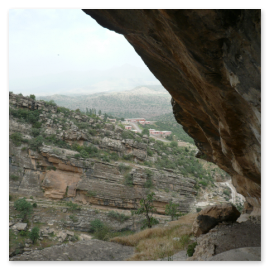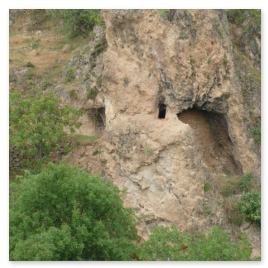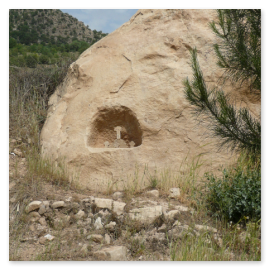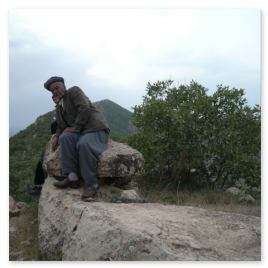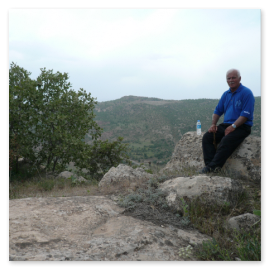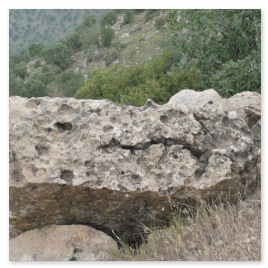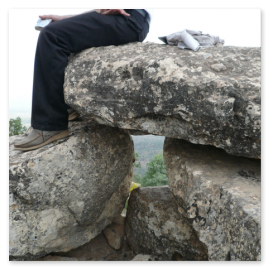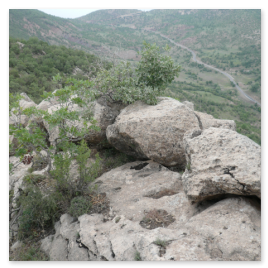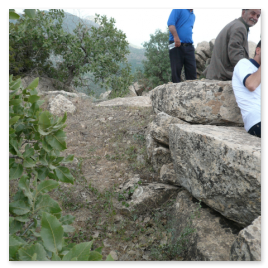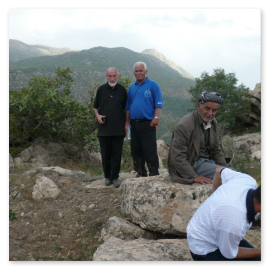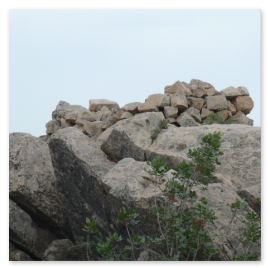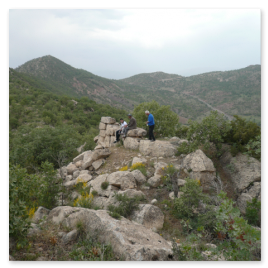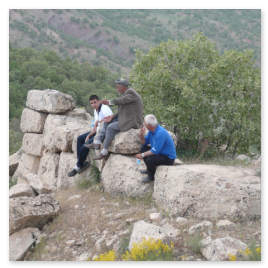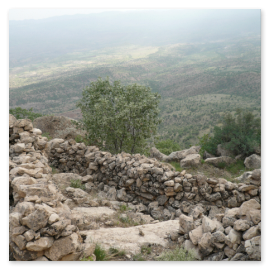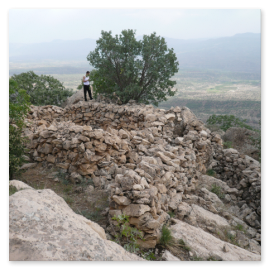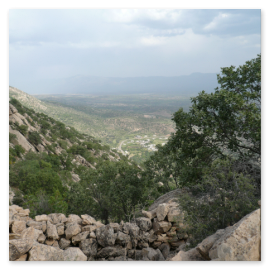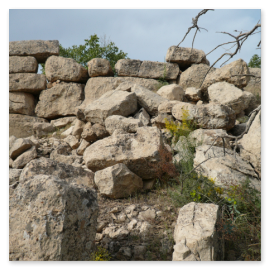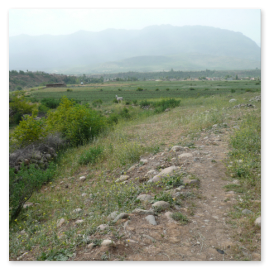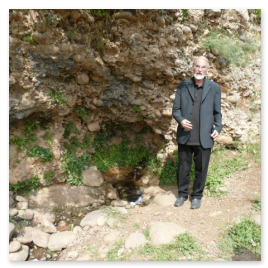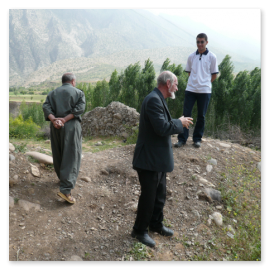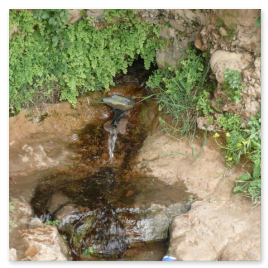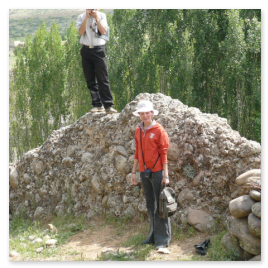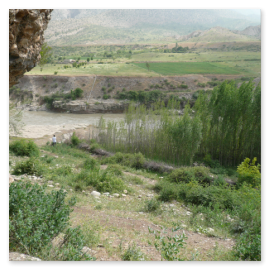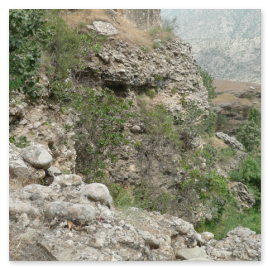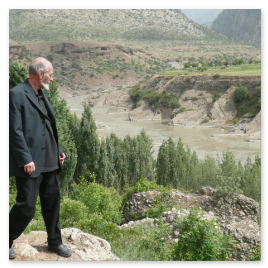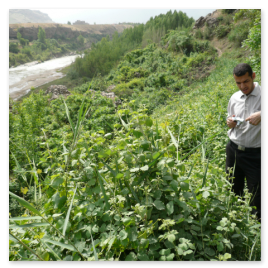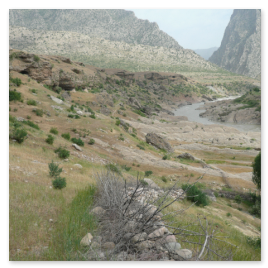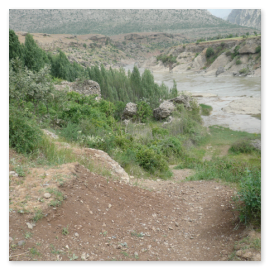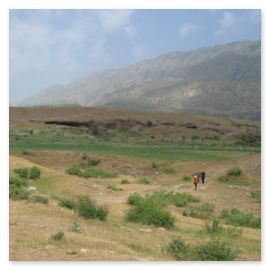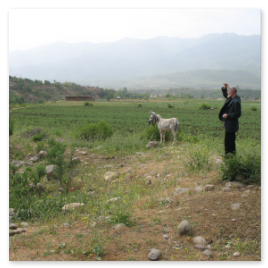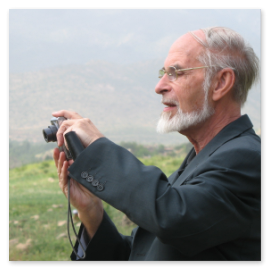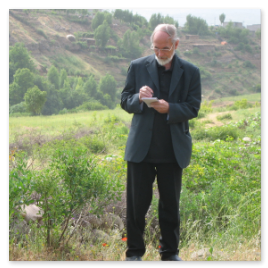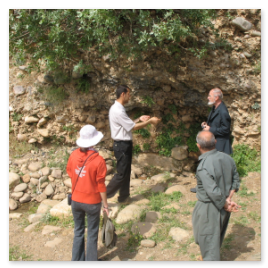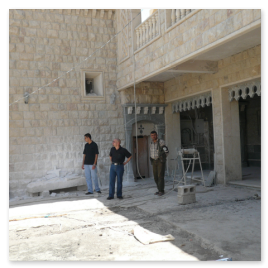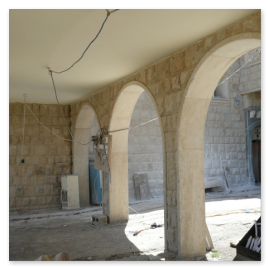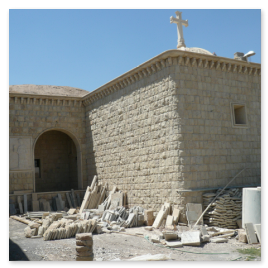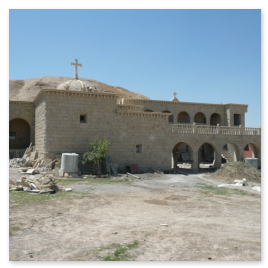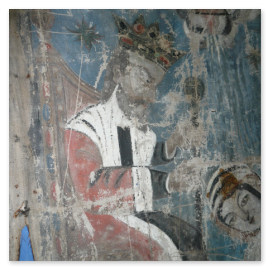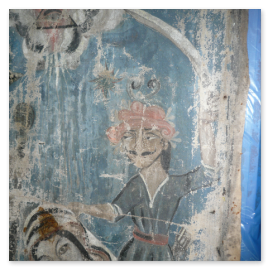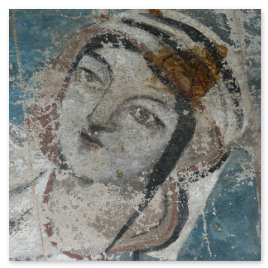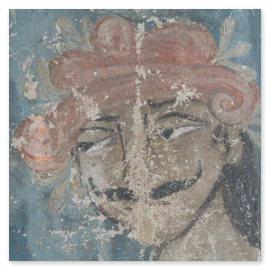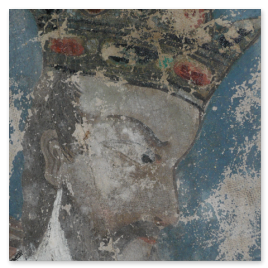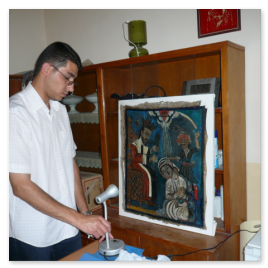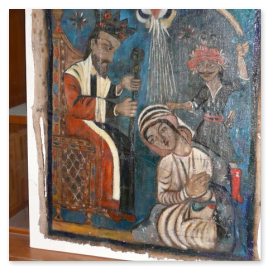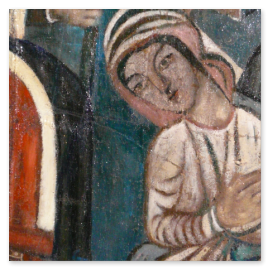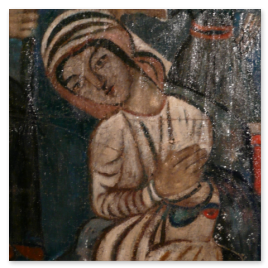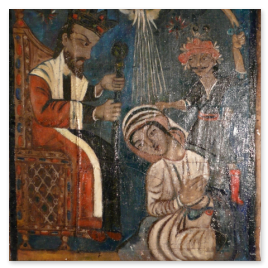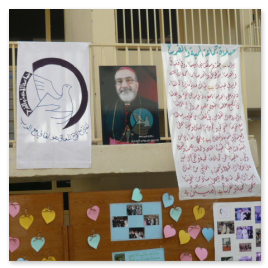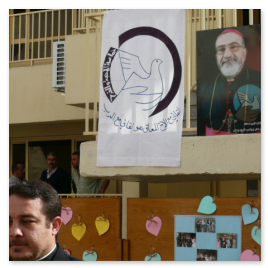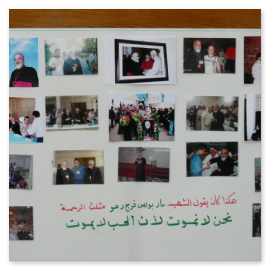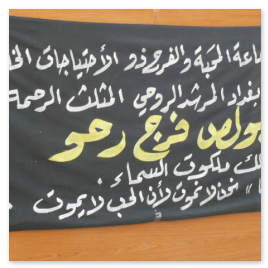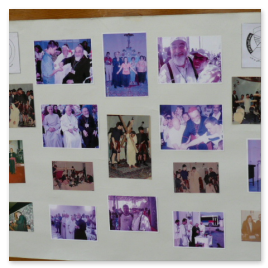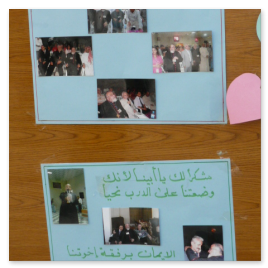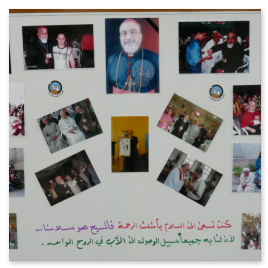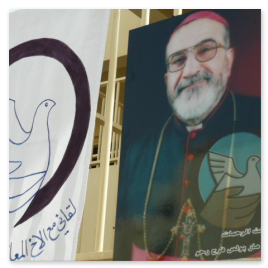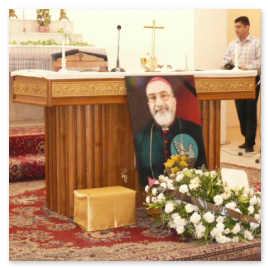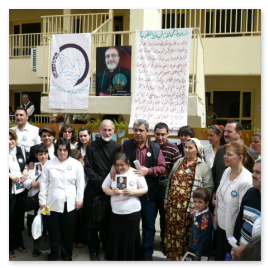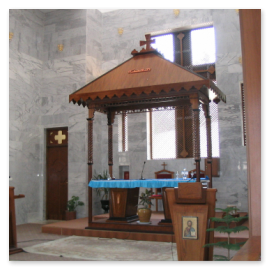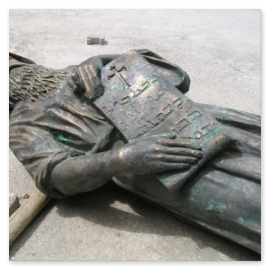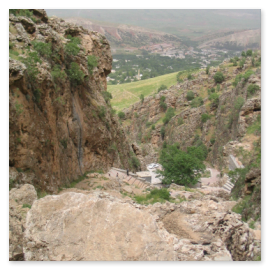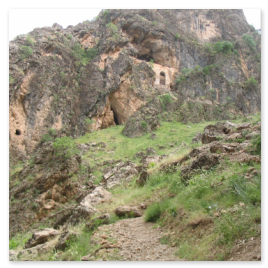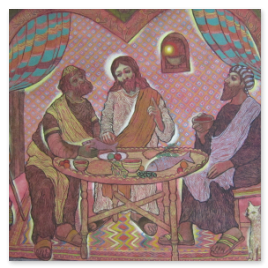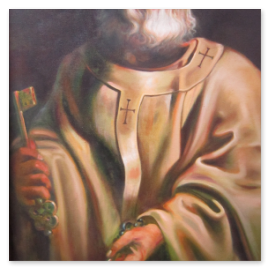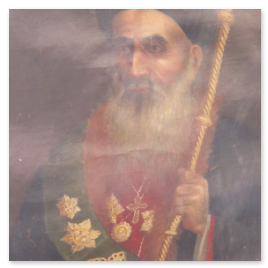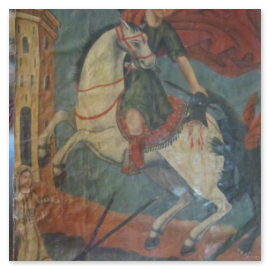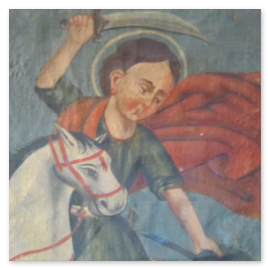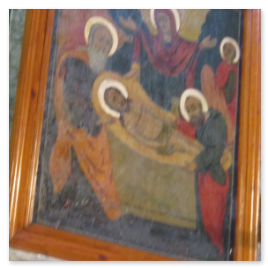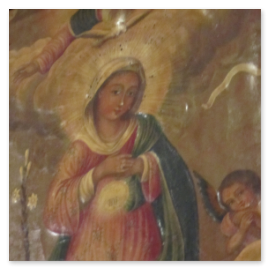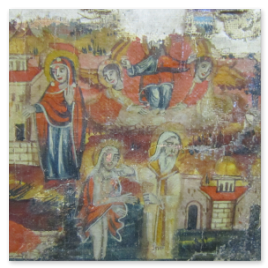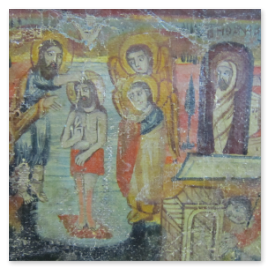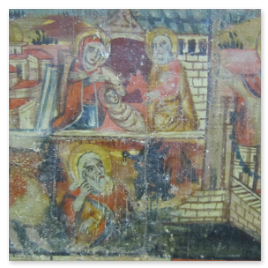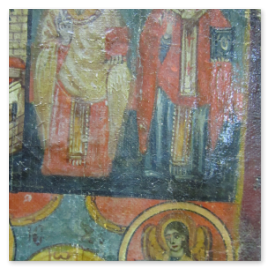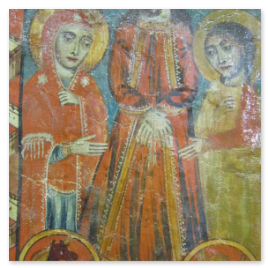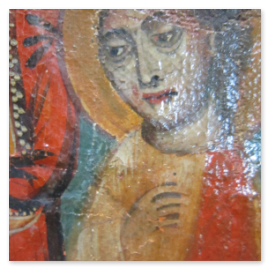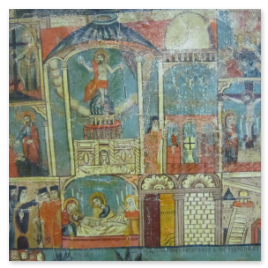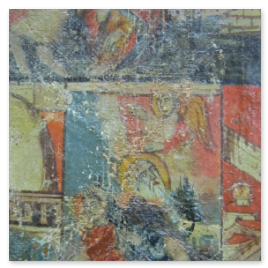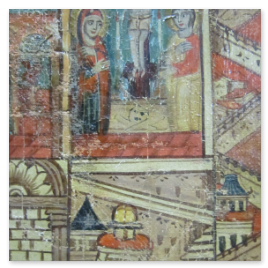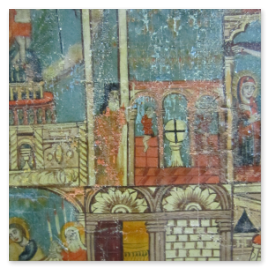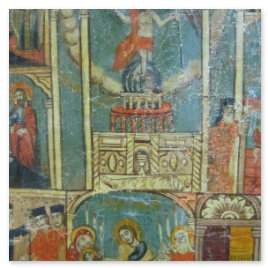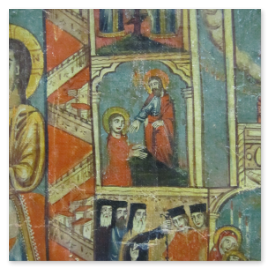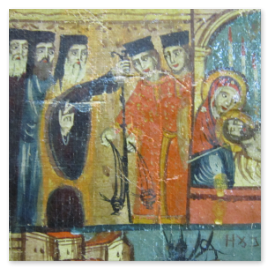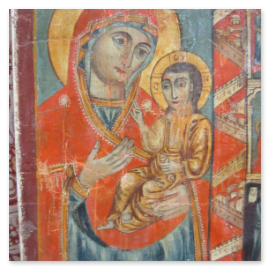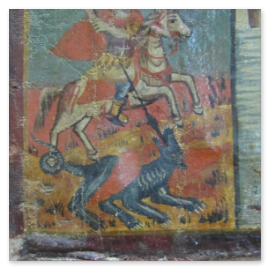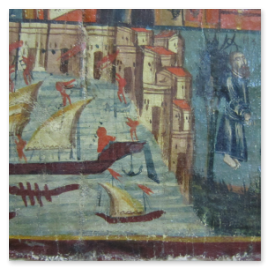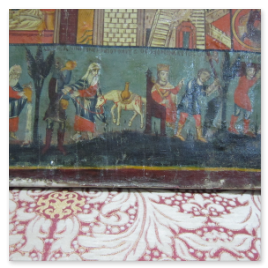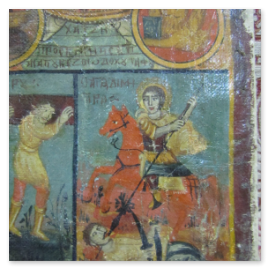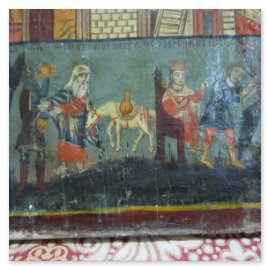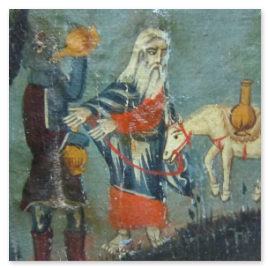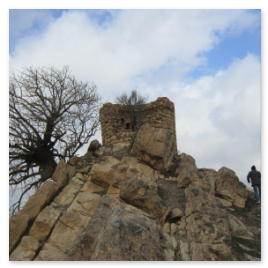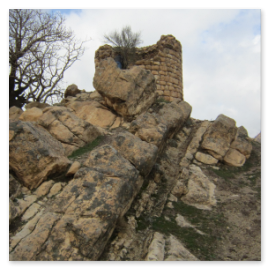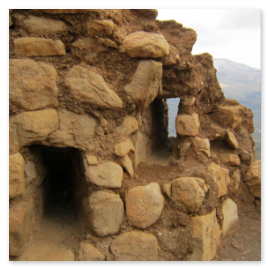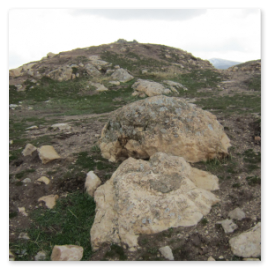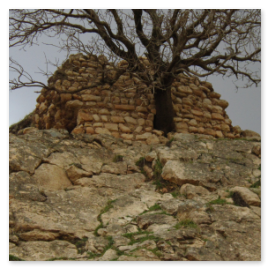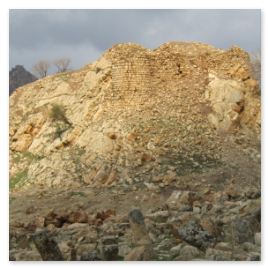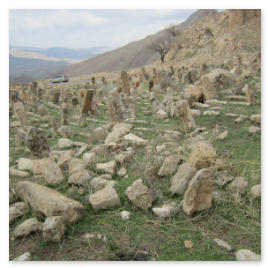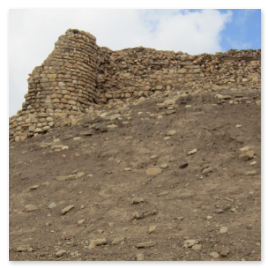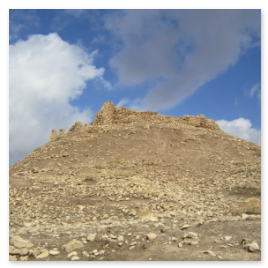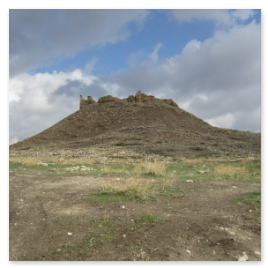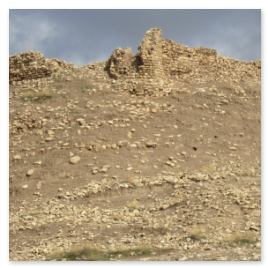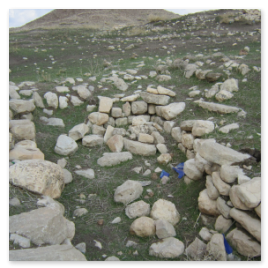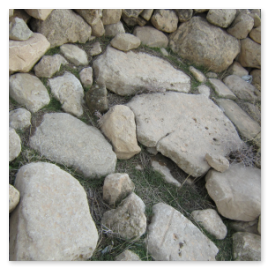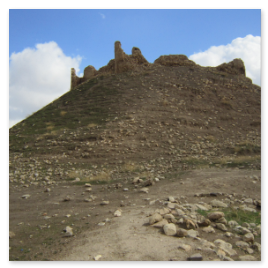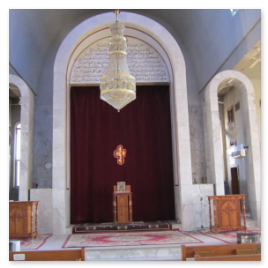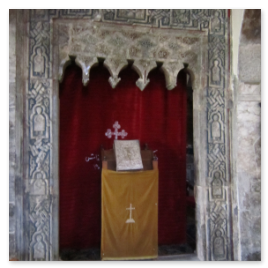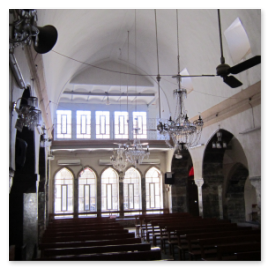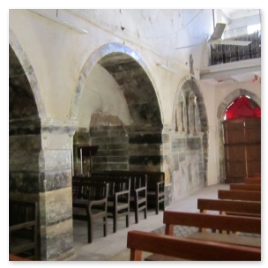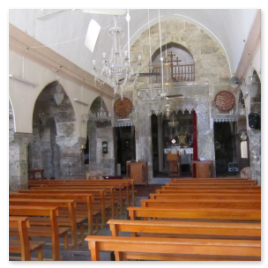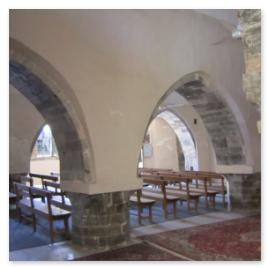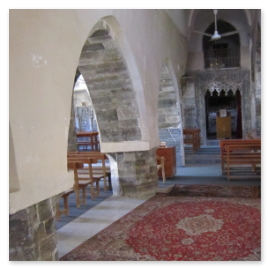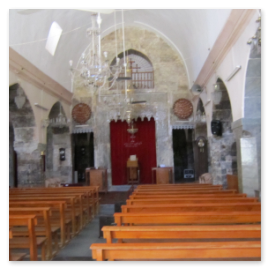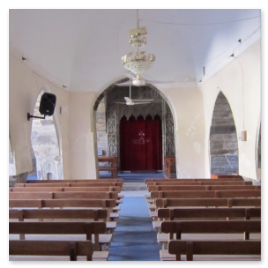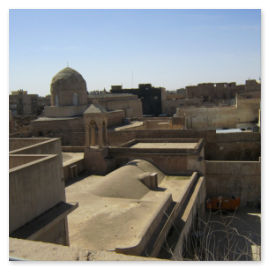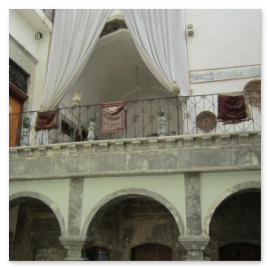TRAVELS
A. RABBAN HORMIZD
Traveling in the North of Iraq
Thanks to the kindness of Fr.Bashar Warda CssR, I was able to visit some old monasteries, villages and ruins in the North of Iraq, during the summer season 2008.
Alqosh
1) First the jubilee celebration of the foundation of the monks of Saint Hormizd in the year 1808, by the martyr monk Gabriel Danbo, in the monastery, founded by Rabban Hormizd in the VIIth c. This occasion allowed us to visit the old monastery on the mountain, and the more recent one (XIXth c.), Deir es-Saida in the valley. There I saw Br.Makarios, who was reading the Glories of Mary (St.Alphonse) in Chaldean, handwritten by Bishop Yousif Audo.
2) About 15 km to the North in the mountains, is a ruin, Beskin, which served as a shelter for the monks who had to work there, in the fruitful valley, for a certain period, far from the monastery. On the way to that remote place, one passes by Guppe d-Maya and the mazar of Sahdona, on the mountain, North of Alqosh.
3) About 20 km to the right of Alqosh, along the mountain chain, are several Yezidiye villages. The biggest one is called Ba’adhra (the house of the Virgin). Previously (more than 200 years ago) there were Christian villages to the NW. Remains of two churches, rests of houses and the graveyard with Syriac and Arabic inscriptions on the tombs.
4) The village of Alqosh itself has old houses and churches: a double church Mar Giwargis and Maryam Adhra (in its present shape:MA), Mar Mikha (probably older, with relics of the prophet Nahoum), Mar Qardah (recent). The Jewish sanctuary of Nahoum is in very bad state.
B. DEIR SEIDA
C. BASKIN
D. MONASTERY
The monastery of Rabban Hormizd is situated upon the Mont Adhra in the neighborhood of the village Alqosh. This old VIIth century monastery contains the tomb of the founder, and three churches. The church of Saint Antony, the church of Rabban Hormizd, now the church of the tombs of the monks, and the church of the H. Trinity, the main great church. In the monastery of Our Lady in the plain, in the refectory is a painting, made by one of the monks, Akha Dadisho’.
E. RESTORATIONS
Several times during the last years, the superiors of the Congregation made restorations, but the most perfected one, in the inside of the monastery of Rabban Hormizd, was the work of Anba Gibrael in 2012. He restored the churches, and covered the walls with some white protective painting. He even opened the tomb under the altar in the church of Rabban Hormizd, but it isn’t clear what he really found in it.
F. BISHOPS OF KERKOUK
April 2012, on a visit to Kerkouk, with the two bishops, the previous one Mgr. Abdelahad Sana, a famous linguist and liturgist, and Mgr. Dr. Louis Sako, the actual Archbishop of Kerkouk, a wellknown specialist in Syriac patristics and theology. He was honored with a distinction from the Vatican as “Defensor Fidei”. In 2013 he was elected as Patriarch of Babel for the Chaldeans under the name of: Mar Louis Raphael I Sako. Mgr. Abdelahad Sana passed away in the year 2012.
G. ANIS WITH HIS OLD FATHER
April 2012 in Shaklawa, with Fr. Anis and his father in Kurdish vestments. Fr. Anis was a deacon and ordained priest in 2012 for the village where he was born.
TRAVELS ALQOSH
A. ALQOSH
2011: Fr. Aram, a newordained priest guided us through his village Alqosh, where he showed us the shrine of Mar Qardah and the main church of Mar Giwargis, with the inscriptions on the tombs of the deceased priests.
B. BA' ADHRA
To the West of the village of Alqosh, there are ruins of several old Christian villages, with rests of churches and tombs on a graveyard from the XVIIIth c.
TRAVELS TO BEHNAM
CONVENT
The convent of Mar Behnam in the neighborhood of Mosul. The main structure of the church dates back to the XIIth century, and the famous litels around the doors represent the Two baptisms of the Saint, and other scenes of his life. In the “pit” where the shrine of the saint is kept, an armenian sculpture on a stone represents symbols of the eucharist.
TRAVELS ZAKHO
A. BEDARO
Zakho
1) On the way from Alqosh to Dehok are several Christian villages (Semeil). In Dehok a modern Chaldean church was build: Mar Aitallah. On the road to Zakho, before the mountain pass, to the left, 30 km, at the foot of the mountain (Be-kheir) are the rests of a stronghold city, called Za’afaran (cfr.infra). In the city of Zakho the old Mar Giwargis church is being renewed and enlarged, with a high tower. Famous is the Abbasid Bridge, over the river Khabour. There is also a second Chaldean church (Maryam Adhra), a Syrian Catholic and an Armenian Orthodox one.
2) NW from Zakho, along the river, are old Christian villages, Bedaro with its church renewed in the old style, Feishkhabour, also with the church renewed, an old crypt and a grotto on the river board. There had been a monastery, but nothing remains. Then Karawoulla, and Deir Aboun, where a one-aisle church is kept, amidst the mulberry trees. In the neighborhood was once a convent. Among the other villages we mention only Shiranis, now being restored, as an example of a mountain village.
3) Most famous is the mentioned city of Za’afaran, with its huge long defense wall kept (about 5 km). Mentioned by Miss Bell (From Amourath to Amourath) and other travelers of past centuries. In the center we found a stone with a cross incurved, and also Christian emblems on the stones of the entrance doors. Several caves and a water conduct are visible. Years ago in one of the caves manuscripts were noticed. It seems that next to it, about 3 km to the SE a monastery existed under the same name: Deir ez-Za’afaran, probably on a tell which serves now as a graveyard.
B. FEISH KHABOUR
C. DEIR ABOUN
D. ZA' AFARAN
TRAVELS BAZIAN
A. KIRKOUK
Kirkouk
1) Kirkouk itself where several Christian communities (Chaldean, Assyrian, Armenian, Syrian) live together, each one with his churches. The Armenians have an old church. The three Chaldean churches are recently built or restored. On the Qal’a, an elevated place where the old fortified city was, are rests of a great Chaldean church, erected probably more than 100 years ago. The most important ruin should be the martyrium church of Mar Tamarsgerd, but its remnants are completely covered by a graveyard, since the church was destroyed in the 20ties of last century, so that nothing of it remains visible. A double church has been constructed next to the place, filled with graves and inscriptions. The bishop of Kirkuk might have plans for an excavation and restoration. Miss Bell had visited this place and token photographs with a map. More recently (2007) Bishop Andraos Sana has written about it in Arabic.
B. BAZIAN
2) Bazian. Halfway the road from Suleimaniya to Kirkuk excavations took place, the last years, since 1998. Next to huge gates, which formed a border between two regions, Kurdish and Arabic, Rich, in the XVIIIth c., had noticed a caravan khan. Some small ruins were left visible afterwards. The excavations under the supervision of an Iraqi specialist have shown a church with a well kept bema, surrounded by other buildings, forming a kind of rectangular stronghold convent. Crosses and other small relics were found o the spot, now kept in the museum of Suleimaniya. The shape of the crosses and the church is similar to those found in el-Hira, and date probably from the VIIth c. This convent might have been in connection with the one mentioned in the Book of the Governors (Deir Awa), because one of the monks from Bazian was asked by Isho’Yahb IV to sing on the bema in Deir Awa.
TRAVELS SAPNA
A.MANGEISH
Sapna
1) Leaving Dehok to the East, some other Christian villages are found, next to Zawita, and in the neighborhood of Sersink. On an other road, East from Zakho several Christian villages are situated, the most know being Bersive, with remains of an old church (VIIth c.), next to the actual one. Approaching the Sapna Valley, which follows the Matina mountain chain, the village of Mangeish is met. The old church (VIIth c.? because its architecture resembles Sultana’s) is restored in a horrible way. In the neighborhood are ruins of a nuns’ convent, and the mazar of St.Thomas(?).
2) On the far West end of the road longing the Matina mountain, an Assyrian village De’e is situated. Some years ago there was an inscription on the church wall saying: this church was founded by Mar Mari. But since, it has disappeared and nobody wants to remember it. Leaving the village to the West, there are some grottos for monks on the right side of the road, and on the left, on the top of a high mountain, the rest of Mar Qiyouma. It might have been a very small church, build with huge rocky stones, serving probably as a gathering place for the hermit monks.
B. DAWOUDIYA-PIRAMOUS
3) Back on the road to the East, one finds several Chaldean villages, newly rebuild: Dawoudiya, Araden, Inishki, Tenna eo. Most of this country has been divested by the previous president, when fighting the Kurds in the 80ties. Dawoudiya once had a church dedicated to St.John the Baptist, with a place called: dukta d-reisha. To the South (3 km) on the boards of the Sapna river there are rests of the mills, once belonging to the monastery Assiyyare, mentioned in the History of Rabban Bousnaya. Further on there are rests of a greater convent. To the NE of Dawoudiya, on the flank of the mountain, under the rests of a Kurdish village, Piramous, the remnants of a well-known monastery could be discovered, Deir Mar Awraha Abile. The Kurdish village was destroyed by the bombs of president Sadam, and transferred afterwards to a place in the neighborhood of Tenna, next to the place where Deir Assiyyare was situated. The Kurds used all the stones of the ruin to rebuild their village. Under the divested Piramous traces of the convent can be recognized. The convent church, which served for centuries as a sanctuary of the Kurdish saint Pir Mousa, can be discovered, with its Holy of Holies, about 4 m. under ground level, directed towards the East, with an opening in the South side, and a nave to the West. All around the ruin are grottos which served once for the monks.
C. ARADEN-SULTANA MANDOKT
4) The next village is Araden, once famous for its bishop Francis. It has an old wellkept church Mart Shmouni, in the style of the VIIth-VIIIth c. churches of that region. Half a km. to the South, the famous church of Soultana Mahdokht stands next to a tell, probably the previous village. It is the most beautiful church of the region, probably dating back to the VIIth c. A small entrance in the South side, then a first baptism chapel and again a second opening to the main church. The churches of Araden and other villages have been restored by Bishop Rabban el-Qas. Here in Araden his work has been successful. The old church of Mar Giwargis in Inishki disappeared, but a ruin of an older church are kept. Further to the East, in the neighborhood of Amadiya, on the mountain, is the Assyrian sanctuary of Mar Awdisho. Three small churches longing each other.
5) The village of Koumana contained once a monastery church of Mar Giwargis. A new modern church is now built on top of it. But further to the East, across the river Sapna, high in the mountain, is a pilgrimage grotto dedicated to Mar Sawa. To obtain healings or children, people use to slide down from the rocks.
6) Finally, far away East, on the boards of the Great Zaab river, a place is known as Aloqa, and people indicate the emplacement of the convent, with behind it mountains with grottos and a source, but nothing definitive can be recognized.
D. KOUMANA-MAR SAWA
5) The village of Koumana contained once a monastery church of Mar Giwargis. A new modern church is now built on top of it. But further to the East, across the river Sapna, high in the mountain, is a pilgrimage grotto dedicated to Mar Sawa. To obtain healings or children, people use to slide down from the rocks.
6) Finally, far away East, on the boards of the Great Zaab river, a place is known as Aloqa, and people indicate the emplacement of the convent, with behind it mountains with grottos and a source, but nothing definitive can be recognized.
E. DEHE-MAR QEIYOUMA
TRAVELS ALOQA
A. ALOQA
TRAVELS KERMLEISH
A. BARBARA
B. MARTYRS
B. MARTYRS
TRAVELS ERBIL
A. CHURCHES
B. PAINTINGS
C. CASTLES
D. CHURCHES IN MOSUL
